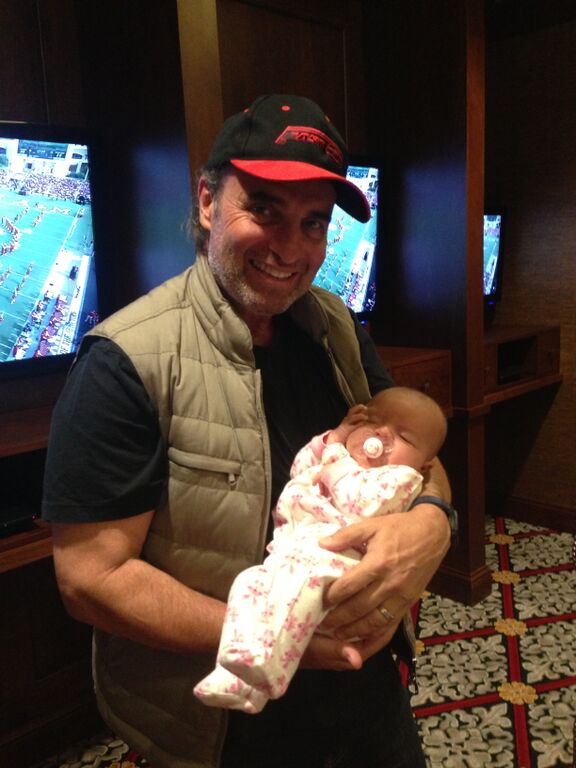How Did This Get Made? Furious 7 (An Oral History)
We may receive a commission on purchases made from links.
Fast Cars + Furious Stunts = How Did This Get Made?!?!
This is that story behind the stunts of the 5th highest grossing movie of all time: FURIOUS 7.
Given the box-office success of Fast & Furious 6 ($788 million worldwide), it's not too difficult to figure out how Furious 7 got made. But there is, however, one thing that does immediately jump out about the making of this film: the staggering number of stunt performers—over 150 in total—that it required to complete this movie.
This is a story about two of those stunt performers—who just so happen to be married to each other—about the film's two stunt coordinators—who also happen to be brothers—and about the brilliant mad scientist at the center of it all...
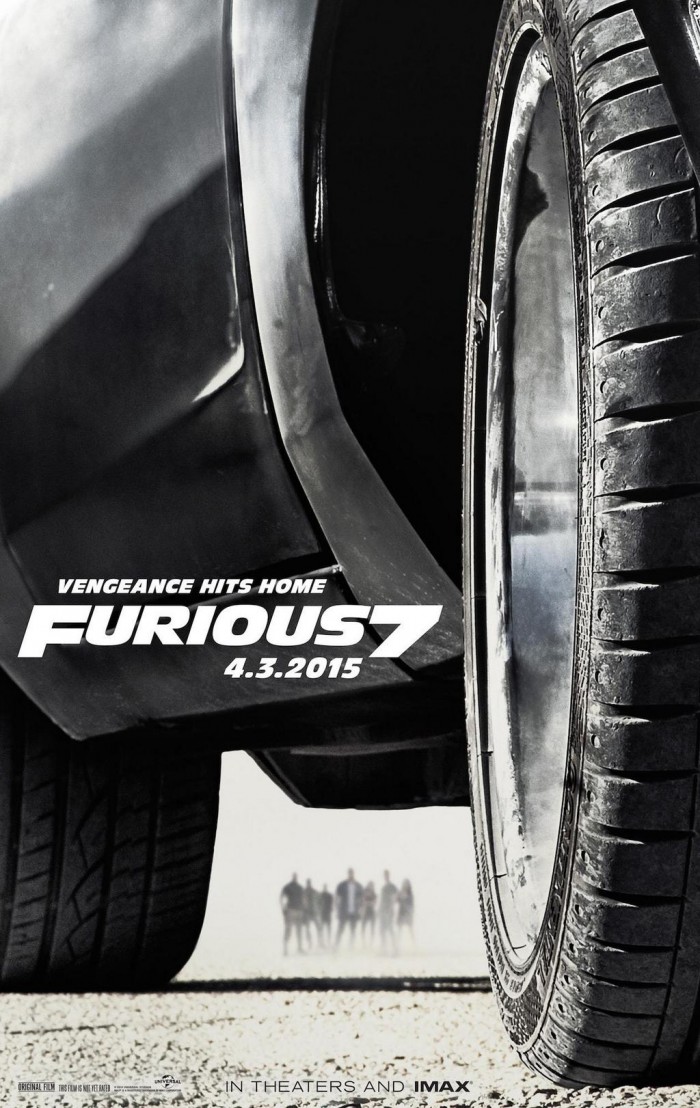 How Did This Get Made is a companion to the podcast How Did This Get Made with Paul Scheer, Jason Mantzoukas and June Diane Raphael which focuses on movies so bad they are amazing. This regular feature is written by Blake J. Harris, who you might know as the writer of the book Console Wars, soon to be a motion picture produced by Seth Rogen and Evan Goldberg. You can listen to the Furious 7 edition of the HDTGM podcast here.Synopsis: Ian Shaw (Jason Statham) seeks revenge against Dominic Toretto (Vin Diesel) and his crew for the death of his brother.Tagline: Vengeance Hits Home
How Did This Get Made is a companion to the podcast How Did This Get Made with Paul Scheer, Jason Mantzoukas and June Diane Raphael which focuses on movies so bad they are amazing. This regular feature is written by Blake J. Harris, who you might know as the writer of the book Console Wars, soon to be a motion picture produced by Seth Rogen and Evan Goldberg. You can listen to the Furious 7 edition of the HDTGM podcast here.Synopsis: Ian Shaw (Jason Statham) seeks revenge against Dominic Toretto (Vin Diesel) and his crew for the death of his brother.Tagline: Vengeance Hits Home
Featuring:
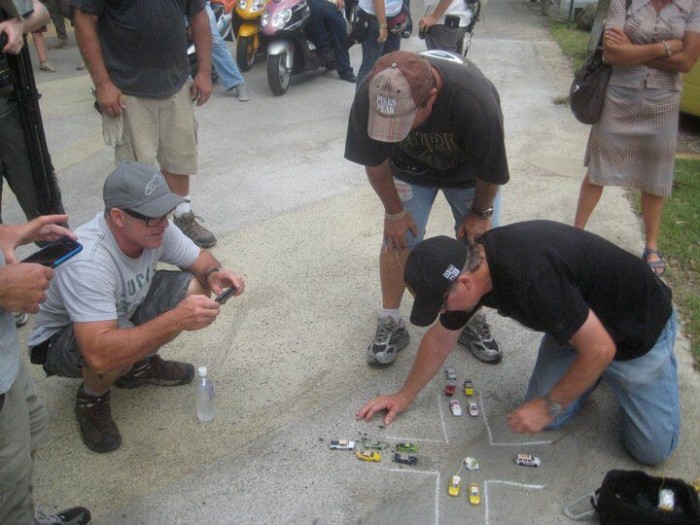 PrologueIn February 2013, legendary stunt man Mike Vendrell passed away. Although Vendrell did not actually appear in Furious 7, he had a definite influence on the film. Some of that comes through his daughter (who followed in his footsteps and worked on the movie); some of it comes from mentoring others (like the man who helped reboot and revive the franchise); and a large part of his influence—the most unquantifiable of all—comes from stories like the following and what they represent to those in the stunt industry: Heather: The very first movie I ever did was Transformers, which was directed, as you probably know, by Michael Bay. And so I'm there—on my first day, on my first movie—and there were like 40-50 other stunt performers working on set. And between takes, these guys like to sit around telling stories. Remember the time...did you hear about...etc, etc. I love all that stuff. So I'm smiling along until one of the guys goes, "Did I ever tell you about the time I was working for Michael Bay on The Rock? Yeah, I was there when Mike Vendrell put Michael Bay in a chokehold and threatened to kill him." I mean, I knew the story—Michael Bay had yelled at my dad after doing a very hard stunt, so he put him a chokehold and threatened to kill him—he'd told me the story before, but it was funny to hear other people talk about my dad, you know?
PrologueIn February 2013, legendary stunt man Mike Vendrell passed away. Although Vendrell did not actually appear in Furious 7, he had a definite influence on the film. Some of that comes through his daughter (who followed in his footsteps and worked on the movie); some of it comes from mentoring others (like the man who helped reboot and revive the franchise); and a large part of his influence—the most unquantifiable of all—comes from stories like the following and what they represent to those in the stunt industry: Heather: The very first movie I ever did was Transformers, which was directed, as you probably know, by Michael Bay. And so I'm there—on my first day, on my first movie—and there were like 40-50 other stunt performers working on set. And between takes, these guys like to sit around telling stories. Remember the time...did you hear about...etc, etc. I love all that stuff. So I'm smiling along until one of the guys goes, "Did I ever tell you about the time I was working for Michael Bay on The Rock? Yeah, I was there when Mike Vendrell put Michael Bay in a chokehold and threatened to kill him." I mean, I knew the story—Michael Bay had yelled at my dad after doing a very hard stunt, so he put him a chokehold and threatened to kill him—he'd told me the story before, but it was funny to hear other people talk about my dad, you know?
CUT TO: Three Years Earlier...
 Part 1: How to Become a Stunt Man (and Wife)In August 2005, Heather Arthur was not happy. And neither was her husband Jonathan. Heather: We had both graduated from business school in Colorado and were living in Seattle at the time. I was selling blogs for law firms and Jon was selling property for Walmart. Super exciting!Jonathan: It was a great job, don't get me wrong, but the problem was that it was just an office job. For better or for worse. And the monotony of doing the same thing over and over; it kind of drove my wife and I nuts.Heather: Both of us were hating our jobs...Jonathan: I commuted 72 miles to work each day. Each way.Heather: ...hating our jobs and asking ourselves: is this going to be the next 30 years of our life? Is this what we worked so hard for? To work 70 hours a week and never see our spouse? I just felt like I was staring down the barrel of a shotgun.Jonathan: So I'm on the phone with my father-in-law [Mike Vendrell] and he says, "You know what? Move to Hawaii." I'm like: what are you talking about?Heather: Jon had also recently read this article about professional stunt drivers and saw that some of them were making six figures. And when he mentioned it to my dad, my dad said, "Oh yeah, those are friends of mine." Come out to Hawaii and I'll put you on this show I'm coordinating.Jonathan: He was starting on this show called Lost and he said, "I think that you and Heather would be perfect for stunts. I'll train you both to be stuntmen, and with your business background I think you'd excel as a producer and coordinator in this industry."Heather: I think that both of us were young and dumb enough to just go: yeah, we can do that. And we had each other; we had a support in both of us. Looking back, it was very naïve. I look at other second-generation stunt performers and there are a lot of them that aren't working. We were probably a little more confident than we should have been.Jonathan: And he continues, "But I need you here in four days if you're gonna do it. Because that's when the season starts, and I've got to have my doubles lined up."Heather: So we both basically quit our jobs and put all our stuff in storage.Jonathan: Four days later, we had the whole place packed up and we were on a plane to Hawaii.Heather: I gave our cat to my Mom and then and prayed that we'd be able to make a decent enough living to pay off student loans and whatnot. But that's why I love my husband so much; there's not to many people who would agree to quit their jobs with you and then move in with your dad in Hawaii. Oh yeah, I should have also mentioned that we were going to be living with my dad.
Part 1: How to Become a Stunt Man (and Wife)In August 2005, Heather Arthur was not happy. And neither was her husband Jonathan. Heather: We had both graduated from business school in Colorado and were living in Seattle at the time. I was selling blogs for law firms and Jon was selling property for Walmart. Super exciting!Jonathan: It was a great job, don't get me wrong, but the problem was that it was just an office job. For better or for worse. And the monotony of doing the same thing over and over; it kind of drove my wife and I nuts.Heather: Both of us were hating our jobs...Jonathan: I commuted 72 miles to work each day. Each way.Heather: ...hating our jobs and asking ourselves: is this going to be the next 30 years of our life? Is this what we worked so hard for? To work 70 hours a week and never see our spouse? I just felt like I was staring down the barrel of a shotgun.Jonathan: So I'm on the phone with my father-in-law [Mike Vendrell] and he says, "You know what? Move to Hawaii." I'm like: what are you talking about?Heather: Jon had also recently read this article about professional stunt drivers and saw that some of them were making six figures. And when he mentioned it to my dad, my dad said, "Oh yeah, those are friends of mine." Come out to Hawaii and I'll put you on this show I'm coordinating.Jonathan: He was starting on this show called Lost and he said, "I think that you and Heather would be perfect for stunts. I'll train you both to be stuntmen, and with your business background I think you'd excel as a producer and coordinator in this industry."Heather: I think that both of us were young and dumb enough to just go: yeah, we can do that. And we had each other; we had a support in both of us. Looking back, it was very naïve. I look at other second-generation stunt performers and there are a lot of them that aren't working. We were probably a little more confident than we should have been.Jonathan: And he continues, "But I need you here in four days if you're gonna do it. Because that's when the season starts, and I've got to have my doubles lined up."Heather: So we both basically quit our jobs and put all our stuff in storage.Jonathan: Four days later, we had the whole place packed up and we were on a plane to Hawaii.Heather: I gave our cat to my Mom and then and prayed that we'd be able to make a decent enough living to pay off student loans and whatnot. But that's why I love my husband so much; there's not to many people who would agree to quit their jobs with you and then move in with your dad in Hawaii. Oh yeah, I should have also mentioned that we were going to be living with my dad.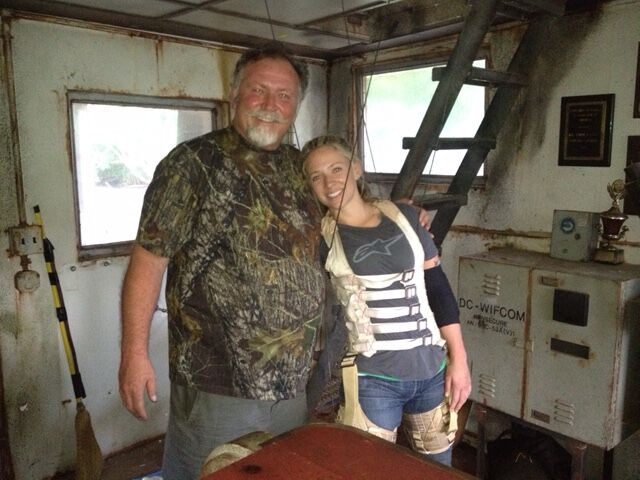 The Arthurs made it to Hawaii just in time and were able to begin their new career on Season 2 of Lost. Jonathan: It was all on-the-job training. We worked on some fight stuff and things that every stunt man should know, but as far as rolling down the side of a mountain or jumping out of a helicopter... you just have to go for it. You need to have the willingness to just say: I'm going to do this and then let your natural instinct take over (if you have that natural instinct within you).Heather: My dad was kind of preparing us for life in this business. Not just the physicality of what it takes to be a stunt person, but the ins and outs of the politics. And his philosophy was basically: be humble, do a good job, and the second you think you're awesome someone's gonna tell you that you're not and you'll be humbled real fast. Always remember this: being a stuntman, you're only as good as your last job.Jonathan: So it was a great transition. We had a lot of fun learning the ropes and we started right up with martial arts classes. Heather's father was a Sifu Master and had a Kung Fu studio on the big island. So we were living on the big island, staying with him and taking these classes, and then flying over to Oahu for all our shoot days.Heather: It's funny—given my later involvement with the Fast and the Furious—but my very first stunt was doubling for Michelle Rodriguez. They needed me to fall down into a 12-foot hole. And before the scene, my dad gathered up all the cast and crew on set and said, "Okay everybody, this is my daughter's first stunt!" Thanks, Dad; like that didn't make me more nervous! But as soon as the camera rolled I was hit with this adrenaline rush and after that first stunt, let me tell you, I was hooked. I wanted more. I wanted to do this more and more and more. And Michelle was so wonderful. She gave me a big hug afterwards and she was super kind to me. She's always been wonderful to the stunt community. And so I doubled her for the rest of that season of Lost.Jonathan: We definitely looked at this career transition as a permanent thing. And because Heather had grown up around the business, we understood what it meant to be a career stunt person. And that meant there are no guarantees. There's absolutely no stability. And you have to anticipate not working for 6 months at a time, because you just don't know when that next job is not going to come through. Or if you're going to get hurt (and need to rehab something for a few month). So, with that said, we knew what we were getting into. It wasn't going to be easy. But you know what? We were happy. We were really happy.Heather: About three weeks after that first stunt came my most memorable stunt. The one I'll always remember for the rest of my life. And it was a tricky one. I had to fall down a cliff and tumble to the bottom with another guy. Through thorn bushes and everything, with no sleeves on or anything. And I remember, before doing it, that the Executive Producer went over to my dad and said, "Are you nervous, Mike? This is your daughter. Your baby girl!" And my dad just replied, "Nope. Not Nervous at all. This is what she was born to do." So anyway I do the stunt and it goes really well. But, like my dad had taught me, even if you do a hard stunt, when you finish you just keep your head down and be humble about it. So at the end, I just lay there on the ground. But then, after a second, I kind of peeked my eyes open and saw my dad looking at me. His eyes were full of tears and he was crying. So I got up and went over to him and said, "Dad, what's wrong? I'm okay! Look, I'm all good!" And he shook his head and said, "No, no, it's not that. I'm just so proud of you. This is what you were born to do and to see you do it, I'm just so proud of you." It was just a really important moment that I'll never forget; like my dad kind of passed the torch on to me that day. Okay: now you're a stunt girl.
The Arthurs made it to Hawaii just in time and were able to begin their new career on Season 2 of Lost. Jonathan: It was all on-the-job training. We worked on some fight stuff and things that every stunt man should know, but as far as rolling down the side of a mountain or jumping out of a helicopter... you just have to go for it. You need to have the willingness to just say: I'm going to do this and then let your natural instinct take over (if you have that natural instinct within you).Heather: My dad was kind of preparing us for life in this business. Not just the physicality of what it takes to be a stunt person, but the ins and outs of the politics. And his philosophy was basically: be humble, do a good job, and the second you think you're awesome someone's gonna tell you that you're not and you'll be humbled real fast. Always remember this: being a stuntman, you're only as good as your last job.Jonathan: So it was a great transition. We had a lot of fun learning the ropes and we started right up with martial arts classes. Heather's father was a Sifu Master and had a Kung Fu studio on the big island. So we were living on the big island, staying with him and taking these classes, and then flying over to Oahu for all our shoot days.Heather: It's funny—given my later involvement with the Fast and the Furious—but my very first stunt was doubling for Michelle Rodriguez. They needed me to fall down into a 12-foot hole. And before the scene, my dad gathered up all the cast and crew on set and said, "Okay everybody, this is my daughter's first stunt!" Thanks, Dad; like that didn't make me more nervous! But as soon as the camera rolled I was hit with this adrenaline rush and after that first stunt, let me tell you, I was hooked. I wanted more. I wanted to do this more and more and more. And Michelle was so wonderful. She gave me a big hug afterwards and she was super kind to me. She's always been wonderful to the stunt community. And so I doubled her for the rest of that season of Lost.Jonathan: We definitely looked at this career transition as a permanent thing. And because Heather had grown up around the business, we understood what it meant to be a career stunt person. And that meant there are no guarantees. There's absolutely no stability. And you have to anticipate not working for 6 months at a time, because you just don't know when that next job is not going to come through. Or if you're going to get hurt (and need to rehab something for a few month). So, with that said, we knew what we were getting into. It wasn't going to be easy. But you know what? We were happy. We were really happy.Heather: About three weeks after that first stunt came my most memorable stunt. The one I'll always remember for the rest of my life. And it was a tricky one. I had to fall down a cliff and tumble to the bottom with another guy. Through thorn bushes and everything, with no sleeves on or anything. And I remember, before doing it, that the Executive Producer went over to my dad and said, "Are you nervous, Mike? This is your daughter. Your baby girl!" And my dad just replied, "Nope. Not Nervous at all. This is what she was born to do." So anyway I do the stunt and it goes really well. But, like my dad had taught me, even if you do a hard stunt, when you finish you just keep your head down and be humble about it. So at the end, I just lay there on the ground. But then, after a second, I kind of peeked my eyes open and saw my dad looking at me. His eyes were full of tears and he was crying. So I got up and went over to him and said, "Dad, what's wrong? I'm okay! Look, I'm all good!" And he shook his head and said, "No, no, it's not that. I'm just so proud of you. This is what you were born to do and to see you do it, I'm just so proud of you." It was just a really important moment that I'll never forget; like my dad kind of passed the torch on to me that day. Okay: now you're a stunt girl.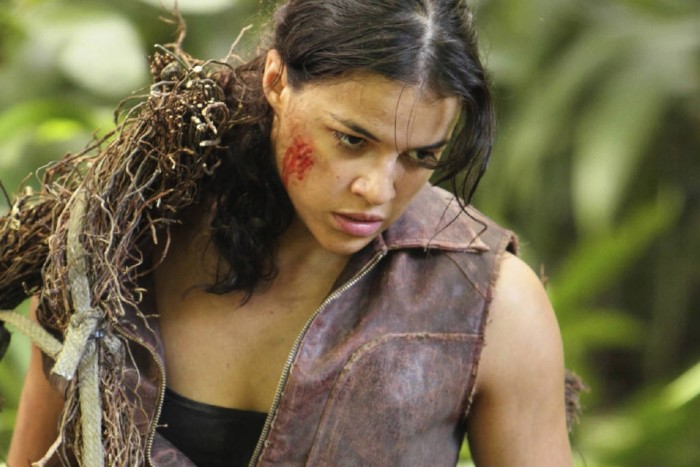 Together, the married stunt duo finished out the season on Lost. In addition to doubling for Michelle Rodriguez, Heather also became the double for Evangeline Lilly as well. Jonathan filled in for a variety of cast members and also became the assistant coordinator for his father-in-law. After completing the season, the couple decided—with advice from their mentor—that they should use this experience (and the credentials it afforded them) to look for work on other projects outside of their father/father-in-law. So they moved to California to try and make that happen. Jonathan: We moved to LA with a small handful of contacts, and Heather hit the ground absolutely running. We were in California for only one week before she started getting phone calls for work. A young, talented, pretty blonde girl? She could pretty much double any star actress out there. So she was busy right off the bat.Heather: I was still doubling Evangeline on Lost, flying back to Hawaii whenever they needed me, and then I was also doubling Jennifer Love Hewitt on Ghost Whisperer and Ali Larter on Heroes. All at the same time. So I was super busy with TV.Jonathan: Breaking into the business, I had a tougher time at first. Because there are more of "me" in Hollywood. So I really had to fight for every job. One thing, at first, that I thought might help me out was driving. I grew up racing cars in the amateur ranks, so I thought that might give me a leg up. But as it turns out with stunt driving—or any specialty, really—coordinators aren't necessarily looking to take a chance on the new guy. Because as talented as you may be, there's a laundry list of guys ahead of you who are just as talented (probably even more talented) and they've already done it before. And the other thing with driving, that maybe you don't think about it at first, is that it's one of those things that you can generally do into your 60s. So the guys that I'm "competing" against—and who I'd later end up working with on the Fast movies—are literally the same guys who were driving Kit on Knight Rider and the General Lee on Dukes of Hazard. Guys, you know, like Jack and Andy Gill.
Together, the married stunt duo finished out the season on Lost. In addition to doubling for Michelle Rodriguez, Heather also became the double for Evangeline Lilly as well. Jonathan filled in for a variety of cast members and also became the assistant coordinator for his father-in-law. After completing the season, the couple decided—with advice from their mentor—that they should use this experience (and the credentials it afforded them) to look for work on other projects outside of their father/father-in-law. So they moved to California to try and make that happen. Jonathan: We moved to LA with a small handful of contacts, and Heather hit the ground absolutely running. We were in California for only one week before she started getting phone calls for work. A young, talented, pretty blonde girl? She could pretty much double any star actress out there. So she was busy right off the bat.Heather: I was still doubling Evangeline on Lost, flying back to Hawaii whenever they needed me, and then I was also doubling Jennifer Love Hewitt on Ghost Whisperer and Ali Larter on Heroes. All at the same time. So I was super busy with TV.Jonathan: Breaking into the business, I had a tougher time at first. Because there are more of "me" in Hollywood. So I really had to fight for every job. One thing, at first, that I thought might help me out was driving. I grew up racing cars in the amateur ranks, so I thought that might give me a leg up. But as it turns out with stunt driving—or any specialty, really—coordinators aren't necessarily looking to take a chance on the new guy. Because as talented as you may be, there's a laundry list of guys ahead of you who are just as talented (probably even more talented) and they've already done it before. And the other thing with driving, that maybe you don't think about it at first, is that it's one of those things that you can generally do into your 60s. So the guys that I'm "competing" against—and who I'd later end up working with on the Fast movies—are literally the same guys who were driving Kit on Knight Rider and the General Lee on Dukes of Hazard. Guys, you know, like Jack and Andy Gill.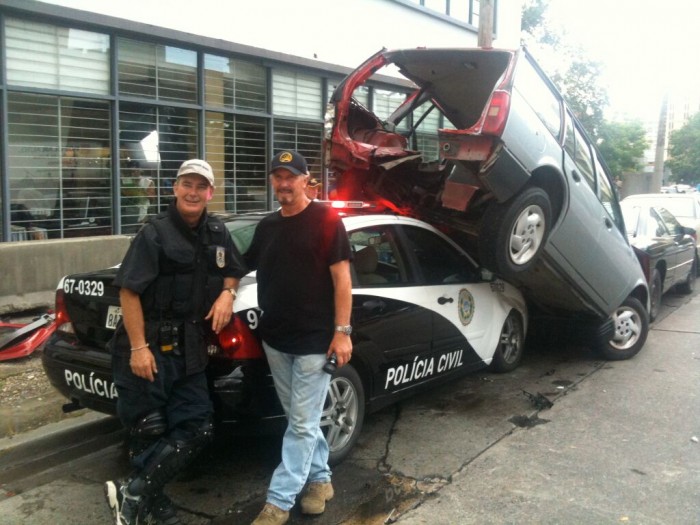 Part 2: The Brothers GillWhen making a movie, the majority of stunt sequences are not actually filmed as part of the 1st unit production. Instead, they are filmed during what is called 2nd unit, where the 2nd unit director, his stunt coordinator and a team of stunt performers capture the action sequences that the movie needs. For some movies, 2nd unit may only last a week. But for the mile-a-minute Fast & Furious films, it usually goes on for a month or two. Both Jack Gill and his brother Andy have done stunt work for the franchise, but more notably they're both known in the business as top-tier stunt coordinators. As such, one of them has served as the stunt coordinator on the past three Furious films. This is significant not only because these have been the three highest-grossing films in the series, but also because the "gritty and authentic" stunt work done in these films is largely credited with helping to resurrect the franchise.Andy: What happened was that Universal wasn't too happy with how 4 [Fast & Furious] performed. And they were looking to make a change.Jack: So they brought us in—myself, our second unit director and a couple of stunt guys—and we kind of had a sit-down talk. A big kind of roundtable meeting with the studio. And they said, "We know that 4 didn't do very well, but we have to get 5 out because we have contracts with the actors." So we came back and said, "Look guys, from a stunt side of this, the reason that 4 did poorly is because of all the CGI." The cars started doing things that the audience could tell is not real. The audience today is pretty savvy—they can see through it pretty quickly—and with all the CG they no longer felt like they were part of the action. So we said: let's go back to doing things real. Let's make the audience feel like they're part of the action again. And that's what really started the evolution of reviving the Fast & Furious franchise. Well, that approach...plus the fact that Spiro is a creative genius.Spiro refers Spiro Razatos, the 2nd unit director on the past three films. Andy: Spiro is a genius.Jack: He works at a whole different level. Every show that I've done with him, the producers always come back after the first week and say to Andy, "I don't think Spiro knows what he's doing." And Andy has to say, "Give him time, just wait until it's cut together." Then the producer will say, "Our editors are lost!" But Spiro has his own editor that understands "Spiro-vision" and when he cuts it together, it's genius.Andy: What makes him that way? I wish I knew. He's a savant. He's one of these guys that just understands—in his head—what the shot needs to look like to be exciting before you even roll it. But the problem is, he can't always verbalize it.Jack: He's kind of like Columbo, you know? 'Cause when you first look at him, no one really knows if he has a clue! This guy doesn't have a clue! He doesn't know what he's doing. And then you see him walk around—and he's got his hand on his head like Columbo did—and everyone's going: Who is this guy? What is he doing? And then all of the sudden, he'll come up with ten genius camera positions to get these shots that nobody else could get. But he never really talks much to anybody. And that's where Andy is great; Andy has been with Spiro so long that he reads him better than anybody.Andy: All I can really say is that I'm so blessed that I've gotten to work with Spiro for so many years. Sometimes he just can't verbalize things, but I understand what he wants.Jack: My brother and Spiro have been working together since, god, the 80s. Back when Spiro was doing these no-budget, category-four, d-class movies.Andy: Spiro and I, we first met from working on the same shows every once in a while. But the thing of it was that because I had gotten into the business through my brother, I had it much easier than Spiro. I was working on Knight Rider, Fall Guy, Riptide and shows like that, but Spiro had come from Denver and was struggling to break in. So he had to find other avenues of work. And one of the things that was happening back then were these low-budget straight to VHS movies. To most stunt guys, that kind of stuff was below them. But Spiro, he had no other options. So he got hired as a stunt guy on a couple of these things, then he coordinated on a couple after that and then, eventually, they asked if he'd like to start directing second unit.
Part 2: The Brothers GillWhen making a movie, the majority of stunt sequences are not actually filmed as part of the 1st unit production. Instead, they are filmed during what is called 2nd unit, where the 2nd unit director, his stunt coordinator and a team of stunt performers capture the action sequences that the movie needs. For some movies, 2nd unit may only last a week. But for the mile-a-minute Fast & Furious films, it usually goes on for a month or two. Both Jack Gill and his brother Andy have done stunt work for the franchise, but more notably they're both known in the business as top-tier stunt coordinators. As such, one of them has served as the stunt coordinator on the past three Furious films. This is significant not only because these have been the three highest-grossing films in the series, but also because the "gritty and authentic" stunt work done in these films is largely credited with helping to resurrect the franchise.Andy: What happened was that Universal wasn't too happy with how 4 [Fast & Furious] performed. And they were looking to make a change.Jack: So they brought us in—myself, our second unit director and a couple of stunt guys—and we kind of had a sit-down talk. A big kind of roundtable meeting with the studio. And they said, "We know that 4 didn't do very well, but we have to get 5 out because we have contracts with the actors." So we came back and said, "Look guys, from a stunt side of this, the reason that 4 did poorly is because of all the CGI." The cars started doing things that the audience could tell is not real. The audience today is pretty savvy—they can see through it pretty quickly—and with all the CG they no longer felt like they were part of the action. So we said: let's go back to doing things real. Let's make the audience feel like they're part of the action again. And that's what really started the evolution of reviving the Fast & Furious franchise. Well, that approach...plus the fact that Spiro is a creative genius.Spiro refers Spiro Razatos, the 2nd unit director on the past three films. Andy: Spiro is a genius.Jack: He works at a whole different level. Every show that I've done with him, the producers always come back after the first week and say to Andy, "I don't think Spiro knows what he's doing." And Andy has to say, "Give him time, just wait until it's cut together." Then the producer will say, "Our editors are lost!" But Spiro has his own editor that understands "Spiro-vision" and when he cuts it together, it's genius.Andy: What makes him that way? I wish I knew. He's a savant. He's one of these guys that just understands—in his head—what the shot needs to look like to be exciting before you even roll it. But the problem is, he can't always verbalize it.Jack: He's kind of like Columbo, you know? 'Cause when you first look at him, no one really knows if he has a clue! This guy doesn't have a clue! He doesn't know what he's doing. And then you see him walk around—and he's got his hand on his head like Columbo did—and everyone's going: Who is this guy? What is he doing? And then all of the sudden, he'll come up with ten genius camera positions to get these shots that nobody else could get. But he never really talks much to anybody. And that's where Andy is great; Andy has been with Spiro so long that he reads him better than anybody.Andy: All I can really say is that I'm so blessed that I've gotten to work with Spiro for so many years. Sometimes he just can't verbalize things, but I understand what he wants.Jack: My brother and Spiro have been working together since, god, the 80s. Back when Spiro was doing these no-budget, category-four, d-class movies.Andy: Spiro and I, we first met from working on the same shows every once in a while. But the thing of it was that because I had gotten into the business through my brother, I had it much easier than Spiro. I was working on Knight Rider, Fall Guy, Riptide and shows like that, but Spiro had come from Denver and was struggling to break in. So he had to find other avenues of work. And one of the things that was happening back then were these low-budget straight to VHS movies. To most stunt guys, that kind of stuff was below them. But Spiro, he had no other options. So he got hired as a stunt guy on a couple of these things, then he coordinated on a couple after that and then, eventually, they asked if he'd like to start directing second unit.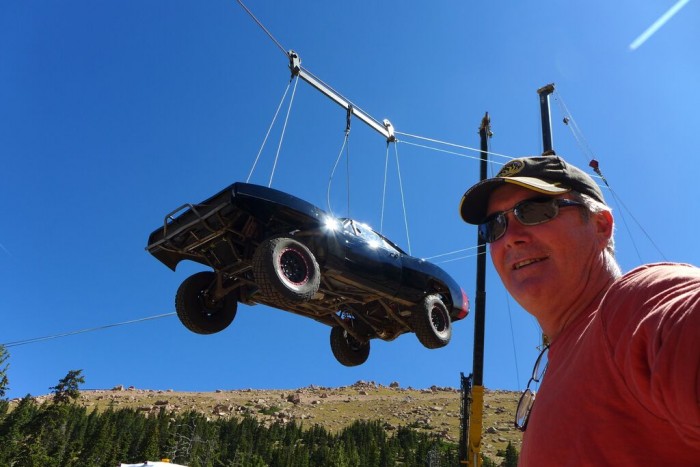 After performing in films like The Wild Life and Invaders From Mars, Spiro got his first 2nd unit directing gig in 1986. It was a film called Omega Syndrome, which was about the daring pursuit of an ex-GI trying to track down his daughter (after she is kidnapped by a gang of white supremacists). Andy: After a little bit, Spiro realized that he couldn't direct these things and also coordinate and also do stunts at the same time. So he asked me if I'd like to coordinate while he directed. I went over and did one of these low-budget things with him and found out how fun it really was.Jack: So when Andy wasn't working for me, he'd go and do these low-budget movies for Spiro. And you could do anything you wanted on those films, so they kept pushing the envelope to see what could be done.Andy: It was pretty much an open slate. Carte blanche. And so it became this animal that every time Spiro would get one, we'd meet at his house—with Denny, Phil and all our other stunt guys—and say: what should we do on this one? What's something that nobody has ever tried before? Like on Maniac Cop 3, we were jabbering about how cool it would be for someone to do a full fire burn while driving a car. Well guess what? Maniac Cop is a zombie—you can't kill him—so that was a perfect chance for us to try this out. That was the fun stuff. And the scenes were scripted, but not really scripted, you know? Like eventually it got the point where they gave Spiro a script and it would just say "car chase." The only real restriction we had was that we didn't have much to work with. Like they'd just give us one or two junky cars. But because of all the stuff that we didn't have, we had to come up with ways to do things cheaply and easily.Jack: As a result, they learned a lot.Andy: Exactly. That's where Spiro and I learned a lot of our techniques. Because we had to get the shot, but didn't always have what folks would normally use to get it. Like, for example, we didn't have access to a big crane arm. So we built these funky, steel-pipe speed-rail contraptions. And do this day, Spiro's still using that same kind of stuff on Fast, Captain America and everything else.Jack: And so over the years, we started to become a pretty close-knit team.Andy: We've got Justin Sundquist and Denney Pierce. They're the body guys. They do all the ground-pounding; the hard hits and the jumping out of cars at 35 miles per hour. Spiro loves the way they throw their bodies at the ground and they roll. Then we've got our car guys: Jack, Henry Kinji and Steve Kelso. We've also got Mike Ryan; he does all our truck driving now. Then there's Debbi Evans. She's great in a car or motorcycle; just as good as any guy. And it just goes down the line.Jonathan: There's Phil Culotta, Wally Crowder and John Escobar. Buzz Bundy was one of them too, before he retired. These are all guys that have all been with Spiro since he was coming up in the business.Heather: In a sense, Spiro's worked with the same guys for the last 25+ years. He has his team. And he refers to it as Team Malaka.Jack: We all stick together, united by a single mantra. And that mantra is that everything has to be as real as possible. If you can't do it real, then let's think of maybe a way that we can change it so that we can do it real.Andy: It's a group we've had together for years. It's a family, really. That's what it is.
After performing in films like The Wild Life and Invaders From Mars, Spiro got his first 2nd unit directing gig in 1986. It was a film called Omega Syndrome, which was about the daring pursuit of an ex-GI trying to track down his daughter (after she is kidnapped by a gang of white supremacists). Andy: After a little bit, Spiro realized that he couldn't direct these things and also coordinate and also do stunts at the same time. So he asked me if I'd like to coordinate while he directed. I went over and did one of these low-budget things with him and found out how fun it really was.Jack: So when Andy wasn't working for me, he'd go and do these low-budget movies for Spiro. And you could do anything you wanted on those films, so they kept pushing the envelope to see what could be done.Andy: It was pretty much an open slate. Carte blanche. And so it became this animal that every time Spiro would get one, we'd meet at his house—with Denny, Phil and all our other stunt guys—and say: what should we do on this one? What's something that nobody has ever tried before? Like on Maniac Cop 3, we were jabbering about how cool it would be for someone to do a full fire burn while driving a car. Well guess what? Maniac Cop is a zombie—you can't kill him—so that was a perfect chance for us to try this out. That was the fun stuff. And the scenes were scripted, but not really scripted, you know? Like eventually it got the point where they gave Spiro a script and it would just say "car chase." The only real restriction we had was that we didn't have much to work with. Like they'd just give us one or two junky cars. But because of all the stuff that we didn't have, we had to come up with ways to do things cheaply and easily.Jack: As a result, they learned a lot.Andy: Exactly. That's where Spiro and I learned a lot of our techniques. Because we had to get the shot, but didn't always have what folks would normally use to get it. Like, for example, we didn't have access to a big crane arm. So we built these funky, steel-pipe speed-rail contraptions. And do this day, Spiro's still using that same kind of stuff on Fast, Captain America and everything else.Jack: And so over the years, we started to become a pretty close-knit team.Andy: We've got Justin Sundquist and Denney Pierce. They're the body guys. They do all the ground-pounding; the hard hits and the jumping out of cars at 35 miles per hour. Spiro loves the way they throw their bodies at the ground and they roll. Then we've got our car guys: Jack, Henry Kinji and Steve Kelso. We've also got Mike Ryan; he does all our truck driving now. Then there's Debbi Evans. She's great in a car or motorcycle; just as good as any guy. And it just goes down the line.Jonathan: There's Phil Culotta, Wally Crowder and John Escobar. Buzz Bundy was one of them too, before he retired. These are all guys that have all been with Spiro since he was coming up in the business.Heather: In a sense, Spiro's worked with the same guys for the last 25+ years. He has his team. And he refers to it as Team Malaka.Jack: We all stick together, united by a single mantra. And that mantra is that everything has to be as real as possible. If you can't do it real, then let's think of maybe a way that we can change it so that we can do it real.Andy: It's a group we've had together for years. It's a family, really. That's what it is.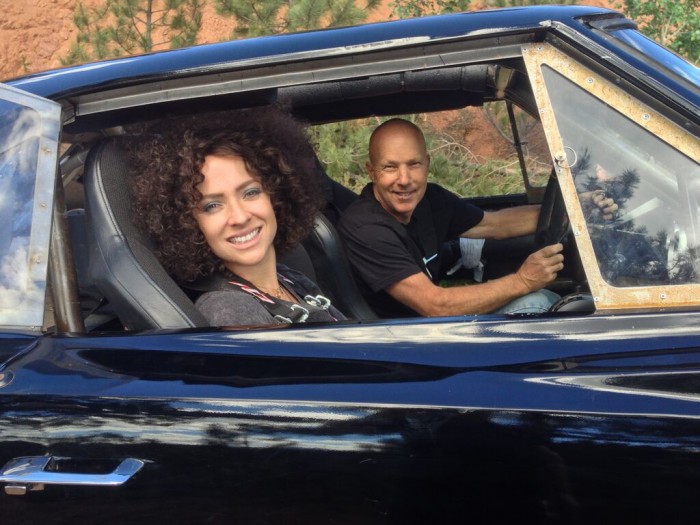 Year after year, the family got bigger and so too did the films that they worked on. But despite their ability to continually raise the bar, this hyper-realistic, renegade mentality didn't always sit well with producers and executives. Some of this resistance was due to perceived danger; some was also likely the result of their low-budget pedigree; but a lot of it was purely just the fact that they had never done it before—worked a $100+ million action-type blockbuster. They, of course, were confident they'd be able to pull it off. All they needed was a chance. And, while they were over in Mumbai, India, that's exactly what they got. Andy: Why were we in India? Because [with overly-sarcastic affection] my good friend Spiro decided we should take a job over there. I begged him not to do it, but his is not a mind that is easy to change. So that's where we were.Heather: My dad was out there too, working on it [Ra.One] with the rest of the guys.Andy: And we'd been there about a month, when one morning I come down to work and I see that Spiro's already there. Spiro is never, ever on time, so I know right away that something's up. And he's got this puppy dog look on his face. And I go, "You got Fast Five, didn't you?" And he says, "Yup." And I go, "You Bastard." And he says, "We'll get someone in here to take over for us and we'll go back to California." And I go, "We can't do that. The production has put a lot of money into us. They put all their eggs in our basket. We can't just walk out on them." He thinks for a second and then says, "But I got to go." And I reply back, "I know." Spiro thinks for a second, pauses, and then says, "But I can't go without you." And I say to him, "Well, you have to. But let me call up Jack and see if he's free." Jack happened to be available, so the two of them went off to start on Fast Five while I stayed back in India. But it wasn't a bad thing, not at all. Because as soon as Spiro left, I sat down with some of the guys—Mike Vendrell, Justin, Denny—and we started throwing out ideas for Fast. In particular, we spent a lot of time talking about the vault sequence. How to pull off the perfect heist...
Year after year, the family got bigger and so too did the films that they worked on. But despite their ability to continually raise the bar, this hyper-realistic, renegade mentality didn't always sit well with producers and executives. Some of this resistance was due to perceived danger; some was also likely the result of their low-budget pedigree; but a lot of it was purely just the fact that they had never done it before—worked a $100+ million action-type blockbuster. They, of course, were confident they'd be able to pull it off. All they needed was a chance. And, while they were over in Mumbai, India, that's exactly what they got. Andy: Why were we in India? Because [with overly-sarcastic affection] my good friend Spiro decided we should take a job over there. I begged him not to do it, but his is not a mind that is easy to change. So that's where we were.Heather: My dad was out there too, working on it [Ra.One] with the rest of the guys.Andy: And we'd been there about a month, when one morning I come down to work and I see that Spiro's already there. Spiro is never, ever on time, so I know right away that something's up. And he's got this puppy dog look on his face. And I go, "You got Fast Five, didn't you?" And he says, "Yup." And I go, "You Bastard." And he says, "We'll get someone in here to take over for us and we'll go back to California." And I go, "We can't do that. The production has put a lot of money into us. They put all their eggs in our basket. We can't just walk out on them." He thinks for a second and then says, "But I got to go." And I reply back, "I know." Spiro thinks for a second, pauses, and then says, "But I can't go without you." And I say to him, "Well, you have to. But let me call up Jack and see if he's free." Jack happened to be available, so the two of them went off to start on Fast Five while I stayed back in India. But it wasn't a bad thing, not at all. Because as soon as Spiro left, I sat down with some of the guys—Mike Vendrell, Justin, Denny—and we started throwing out ideas for Fast. In particular, we spent a lot of time talking about the vault sequence. How to pull off the perfect heist...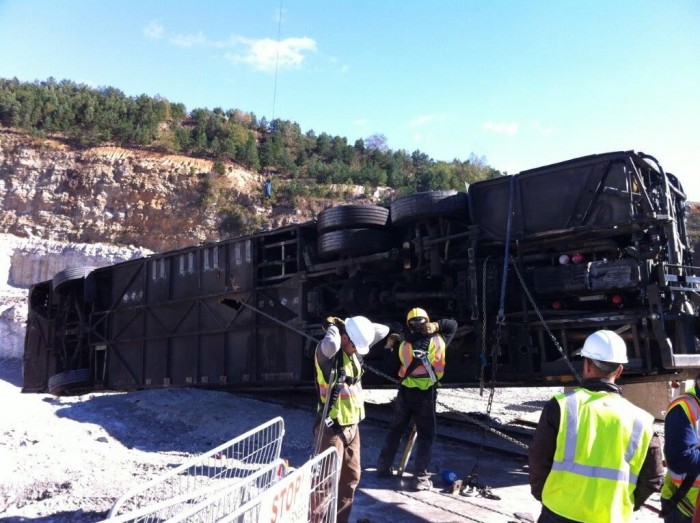 Part 3: The Birth of Spiro-VisionBefore vault sequences and car chases...Before Mars Invaders and Maniac Cops...There was just a boy on a bus with his father...Spiro: When I was ten years old, my dad took me on a special trip. He had no money—he was blind, and he slept on a mattress in a basement—but what he would do is save up and every six months he'd take me on a Greyhound bus for a special trip. We lived in Colorado, so usually we'd go out to the mountains or something. But this time, my dad was taking me to the zoo. Except that as soon as we get off the bus, right in the parking lot, there's a marquee for the movies that says "Shaft." So I said, "Dad, Dad, I gotta see this movie!" And he goes, "Okay, when we get back." And I said, "But I need to see it now." "There's no way," he says. "We just came all this way for our special trip to go to the zoo, and that's where we're going to go." I started crying, right there in the parking lot. And so he says, "You're telling me, right now, in your entire lifetime, you need to see Shaft right now?" And I said yes. And he goes, "Why?" And I say: "I don't know, Dad. I just know I have to see it now."Mr. Razatos eventually relented and took his boy to see the movie. And, because the bus headed back home wouldn't be returning until that evening, they spent the whole day at the theater. They wound up seeing Shaft three-and-a-half times. Spiro: I was picked on as a kid. My mom made me have a crew-cut; that got me bullied even more. And then there was the Greek community; they were always hard on you. So I picked Shaft to be my escape. I ended up seeing Shaft 28 times total, I think. I saw it over and over and decided that I wanted to become Shaft. Until one day, a friend said to me, "You know Shaft doesn't actually do all that stuff, right?"After the friend explained who does actually do all that stuff—the stunt men—Spiro immediately knew what he was going to do with the rest of his life. Spiro: Everything I learned was self-taught. So I had to go and figure out how do you fall without getting hurt. How do you do this? How do you do that? I had to teach myself. And I did. But I wasn't just a daredevil about it. I would take a ladder, climb up to a certain point, and then fall on these tables I'd set out. Then, after that, I go up higher and higher and higher and learn things—about heights and about angles—each time. Or I'd go onto the roof, run off my garage and jump from building to building to building.Heather: And Spiro had a camera—his mom had bought him a Super 8 camera. So he would film himself doing all this stuff. He'd jump off the roof and record it. Or, like, literally light himself on fire. In his bedroom, with no safety.Jonathan: So Spiro was just this Colorado kid that wanted to be a stunt man. And he sent his stunt reel—that he'd made himself, on 8mm footage—off to a guy named Greg Barnett [a famous stuntman, who was coordinating on Hart to Hart at the time]Spiro: After years and years and years of putting together this Super 8 movie, I hear that Greg Barnett is in Colorado. I didn't even have a car, so I have to get a ride to go to where they're filming. But I get there in time and catch Greg coming out of the restroom. I introduce myself and tell him that I'm a stunt guy here in Denver—he's probably thinking "yeahhhh righhhht"—but I just keep going and I tell him that I have this demo reel I need to show him. Well, he's such a great nice person that he gives me his address.Heather: So Spiro sent his tape to this guy Greg, who happened to be friends with my dad. And one time when my dad was over at his house, my dad noticed the reel and asked, "Who's this guy Spiro?"
Part 3: The Birth of Spiro-VisionBefore vault sequences and car chases...Before Mars Invaders and Maniac Cops...There was just a boy on a bus with his father...Spiro: When I was ten years old, my dad took me on a special trip. He had no money—he was blind, and he slept on a mattress in a basement—but what he would do is save up and every six months he'd take me on a Greyhound bus for a special trip. We lived in Colorado, so usually we'd go out to the mountains or something. But this time, my dad was taking me to the zoo. Except that as soon as we get off the bus, right in the parking lot, there's a marquee for the movies that says "Shaft." So I said, "Dad, Dad, I gotta see this movie!" And he goes, "Okay, when we get back." And I said, "But I need to see it now." "There's no way," he says. "We just came all this way for our special trip to go to the zoo, and that's where we're going to go." I started crying, right there in the parking lot. And so he says, "You're telling me, right now, in your entire lifetime, you need to see Shaft right now?" And I said yes. And he goes, "Why?" And I say: "I don't know, Dad. I just know I have to see it now."Mr. Razatos eventually relented and took his boy to see the movie. And, because the bus headed back home wouldn't be returning until that evening, they spent the whole day at the theater. They wound up seeing Shaft three-and-a-half times. Spiro: I was picked on as a kid. My mom made me have a crew-cut; that got me bullied even more. And then there was the Greek community; they were always hard on you. So I picked Shaft to be my escape. I ended up seeing Shaft 28 times total, I think. I saw it over and over and decided that I wanted to become Shaft. Until one day, a friend said to me, "You know Shaft doesn't actually do all that stuff, right?"After the friend explained who does actually do all that stuff—the stunt men—Spiro immediately knew what he was going to do with the rest of his life. Spiro: Everything I learned was self-taught. So I had to go and figure out how do you fall without getting hurt. How do you do this? How do you do that? I had to teach myself. And I did. But I wasn't just a daredevil about it. I would take a ladder, climb up to a certain point, and then fall on these tables I'd set out. Then, after that, I go up higher and higher and higher and learn things—about heights and about angles—each time. Or I'd go onto the roof, run off my garage and jump from building to building to building.Heather: And Spiro had a camera—his mom had bought him a Super 8 camera. So he would film himself doing all this stuff. He'd jump off the roof and record it. Or, like, literally light himself on fire. In his bedroom, with no safety.Jonathan: So Spiro was just this Colorado kid that wanted to be a stunt man. And he sent his stunt reel—that he'd made himself, on 8mm footage—off to a guy named Greg Barnett [a famous stuntman, who was coordinating on Hart to Hart at the time]Spiro: After years and years and years of putting together this Super 8 movie, I hear that Greg Barnett is in Colorado. I didn't even have a car, so I have to get a ride to go to where they're filming. But I get there in time and catch Greg coming out of the restroom. I introduce myself and tell him that I'm a stunt guy here in Denver—he's probably thinking "yeahhhh righhhht"—but I just keep going and I tell him that I have this demo reel I need to show him. Well, he's such a great nice person that he gives me his address.Heather: So Spiro sent his tape to this guy Greg, who happened to be friends with my dad. And one time when my dad was over at his house, my dad noticed the reel and asked, "Who's this guy Spiro?"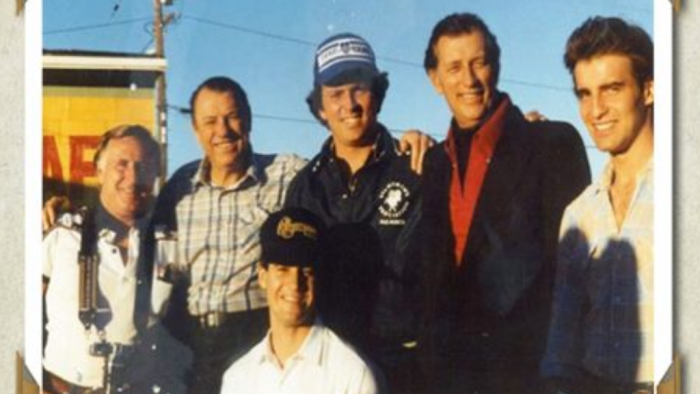 Expecting to have a laugh at the antics of a wannabe stuntman, Mike Vendrell and Greg Barnett watched the demo. Spiro: I remember I get a phone call, And I didn't even know that Mike would have even seen my thing. I mean: Mike Vendrell was a legend. So getting a call from him, it was like if someone wanted to be an actor and all of the sudden Robert De Niro calls you up. And he says, "This is Mike Vendrell. I don't know if you know me, but I just saw your reel and I want to tell you that I'm your biggest fan. And if you ever get out to California, I'll do whatever I can to help you."Heather: Spiro ended up moving out to California and got his start because of my dad.Jonathan: I think he actually slept on Mike's couch when he first moved to LA. And Spiro's never forgotten that; being very good to me and Heather over the years.Heather: Spiro was around before I was born. So he's like family to me.Spiro: It was a very pleasant surprise, when Heather got into the business. A very pleasant surprise and a breath of fresh air. And to see the results...she's great now and she's going to become even greater. She's just a beautiful woman and all of the sudden she can kick ass as a stunt woman. She can be, obviously, a tough stunt woman. And a tough business woman, and she can be a very delicate and great friend.Heather: So it's kind of come full circle. My dad hiring Spiro and helping him get his first job. And me, now, having the chance to work with him on the Fast movies.But that chance almost didn't come. Because although the filmmakers were eager to bring Spiro on board, Universal was initially reluctant. Spiro: Nowadays, I have a great relationship with Universal. But at the time—and I can't blame them for this—they wanted to protect the franchise. They wanted someone who did, you know, the Bourne movies or whatever. A proven track record. But Justin, he really fought for me, and he loved that I shot things practical.
Expecting to have a laugh at the antics of a wannabe stuntman, Mike Vendrell and Greg Barnett watched the demo. Spiro: I remember I get a phone call, And I didn't even know that Mike would have even seen my thing. I mean: Mike Vendrell was a legend. So getting a call from him, it was like if someone wanted to be an actor and all of the sudden Robert De Niro calls you up. And he says, "This is Mike Vendrell. I don't know if you know me, but I just saw your reel and I want to tell you that I'm your biggest fan. And if you ever get out to California, I'll do whatever I can to help you."Heather: Spiro ended up moving out to California and got his start because of my dad.Jonathan: I think he actually slept on Mike's couch when he first moved to LA. And Spiro's never forgotten that; being very good to me and Heather over the years.Heather: Spiro was around before I was born. So he's like family to me.Spiro: It was a very pleasant surprise, when Heather got into the business. A very pleasant surprise and a breath of fresh air. And to see the results...she's great now and she's going to become even greater. She's just a beautiful woman and all of the sudden she can kick ass as a stunt woman. She can be, obviously, a tough stunt woman. And a tough business woman, and she can be a very delicate and great friend.Heather: So it's kind of come full circle. My dad hiring Spiro and helping him get his first job. And me, now, having the chance to work with him on the Fast movies.But that chance almost didn't come. Because although the filmmakers were eager to bring Spiro on board, Universal was initially reluctant. Spiro: Nowadays, I have a great relationship with Universal. But at the time—and I can't blame them for this—they wanted to protect the franchise. They wanted someone who did, you know, the Bourne movies or whatever. A proven track record. But Justin, he really fought for me, and he loved that I shot things practical.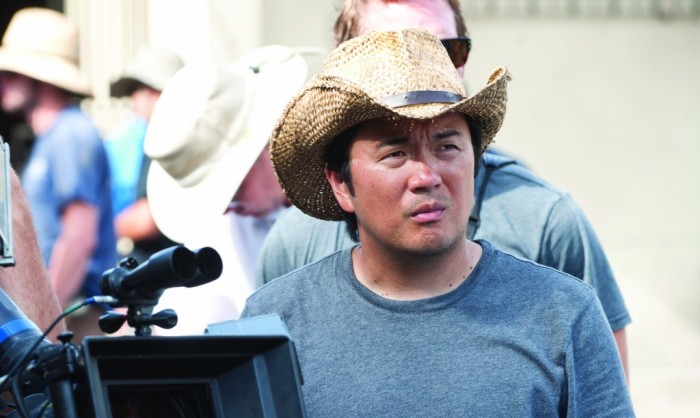 Justin is Justin Lin (who had been directing the franchise since Tokyo Drift) and "practical" means actually shooting a stunt (as opposed to doing it with special effects). Spiro: Justin saw my footage and he knew right away that Spiro puts cameras in interesting places and does things practical. That excited him. So we had a meeting. An interview. We met for 45 minutes and it went fantastic. Justin wanted me, but the studio kind of resisted. And again, at the time, I can't really blame them. But Justin kind of stalled, and hemmed and hawed, and did everything he could until finally it was like [a gurgle of laughter] the other options didn't work out and I was left standing there. So they went for it. And it worked out, you know? Sometimes that's why you have to trust a director who has a vision. And when that doesn't happen—when a lot of people get involved and put their hands in—that's why sometimes you'll see a movie that doesn't feel like it has one single vision.Fast Five went on to earn over $626 million worldwide. That was nearly twice the box office earnings of the previous installment.
Justin is Justin Lin (who had been directing the franchise since Tokyo Drift) and "practical" means actually shooting a stunt (as opposed to doing it with special effects). Spiro: Justin saw my footage and he knew right away that Spiro puts cameras in interesting places and does things practical. That excited him. So we had a meeting. An interview. We met for 45 minutes and it went fantastic. Justin wanted me, but the studio kind of resisted. And again, at the time, I can't really blame them. But Justin kind of stalled, and hemmed and hawed, and did everything he could until finally it was like [a gurgle of laughter] the other options didn't work out and I was left standing there. So they went for it. And it worked out, you know? Sometimes that's why you have to trust a director who has a vision. And when that doesn't happen—when a lot of people get involved and put their hands in—that's why sometimes you'll see a movie that doesn't feel like it has one single vision.Fast Five went on to earn over $626 million worldwide. That was nearly twice the box office earnings of the previous installment. 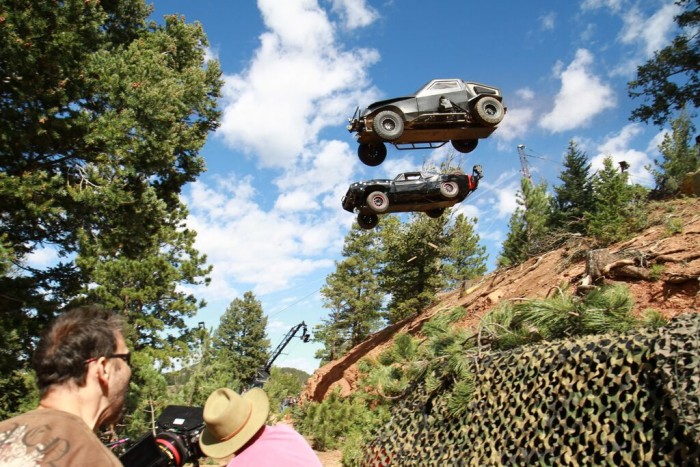 Part 4: Pliers vs. Power ToolsIn July 2012, production began on Fast & Furious 6. Almost all of the film was shot in the United Kingdom. Andy: We were in the UK, prepping on 6, and it's getting close to the time we need to bring in our guys for the shoot. I think it was nine or ten guys we were flying in. So I send out an e-mail out with details for booking flights, and I immediately get a phone call to walk down the hall and meet with one of the producers. So I walk into his office and he doesn't even look up. Just says, "You're not getting your guys. There's plenty of good talent here in the UK." "I'm sure there is," I say, "But Spiro wants his guys. And it's in his contract." The producer doesn't care. "I don't give a fuck what's in Spiro's contract," he says. "You're not bringing in these guys in. We have the talent here. Go tell Spiro." So I relay all of this to Spiro and he goes, "What? It's in the contract." "I know," I say, and so we walk back over to the producer's office. Again, he doesn't bother looking up. He just says, "Don't fucking come into my office, Spiro. You're not getting your guys. There's no reason to fly in a bunch of guys from America just so you can play with your little friends here."Spiro: The studios know that if they're going to call me, my people come with me. They don't like it a lot—they always think you can just use other people—but from Day One, I have fought tooth and nail for my guys. Even when I had no position to fight from. But here's the thing: I never did it because I wanted to be with them—my friends, my family—I did it because I knew the best results would come from working with them. I would be able to do what I do best, and it would translate onto the screen in a way that would benefit everyone the most; including the producers.Andy: So Spiro explains that to the producer. How it's about working with people you know, people you trust. But the producer just cuts him off and says, "I've heard all that before. Don't even bother."Spiro: It really does make a difference. I'll give you an example. I was working on Talladega Nights—one of my favorite movies—and the 2nd unit producer said that we couldn't bring in our own camera operators. "There are operators here," he explains. "We don't have it in the budget." And I go: then let's move something around. "No, no, no no, no," he replies. "We don't have it on the budget." So I say: how many days do you have scheduled for us to do 2nd unit. He says 22 days. I go: "Okay, I'll tell you what. Give me 21 days and take the money from that one day and use it to pay for those people." He then tells me that what we need to shoot can' be done in 21 days. So I go: let me explain to you what I'm trying to say. If you go: Spiro, here is the lumber and everything you need; I want you to build this shed for me. You have 2 weeks to build it. Here's screwdrivers and Phillips things and pliers. But I don't want any of that stuff, because what I really need is power tools. If you give me the power tools, I'll build you the shed in a week and half. And my shed will be twice and strong and twice as good looking as what would get done the other way. And so that's how I work: I need the power tools and they always trying to give me screwdrivers.
Part 4: Pliers vs. Power ToolsIn July 2012, production began on Fast & Furious 6. Almost all of the film was shot in the United Kingdom. Andy: We were in the UK, prepping on 6, and it's getting close to the time we need to bring in our guys for the shoot. I think it was nine or ten guys we were flying in. So I send out an e-mail out with details for booking flights, and I immediately get a phone call to walk down the hall and meet with one of the producers. So I walk into his office and he doesn't even look up. Just says, "You're not getting your guys. There's plenty of good talent here in the UK." "I'm sure there is," I say, "But Spiro wants his guys. And it's in his contract." The producer doesn't care. "I don't give a fuck what's in Spiro's contract," he says. "You're not bringing in these guys in. We have the talent here. Go tell Spiro." So I relay all of this to Spiro and he goes, "What? It's in the contract." "I know," I say, and so we walk back over to the producer's office. Again, he doesn't bother looking up. He just says, "Don't fucking come into my office, Spiro. You're not getting your guys. There's no reason to fly in a bunch of guys from America just so you can play with your little friends here."Spiro: The studios know that if they're going to call me, my people come with me. They don't like it a lot—they always think you can just use other people—but from Day One, I have fought tooth and nail for my guys. Even when I had no position to fight from. But here's the thing: I never did it because I wanted to be with them—my friends, my family—I did it because I knew the best results would come from working with them. I would be able to do what I do best, and it would translate onto the screen in a way that would benefit everyone the most; including the producers.Andy: So Spiro explains that to the producer. How it's about working with people you know, people you trust. But the producer just cuts him off and says, "I've heard all that before. Don't even bother."Spiro: It really does make a difference. I'll give you an example. I was working on Talladega Nights—one of my favorite movies—and the 2nd unit producer said that we couldn't bring in our own camera operators. "There are operators here," he explains. "We don't have it in the budget." And I go: then let's move something around. "No, no, no no, no," he replies. "We don't have it on the budget." So I say: how many days do you have scheduled for us to do 2nd unit. He says 22 days. I go: "Okay, I'll tell you what. Give me 21 days and take the money from that one day and use it to pay for those people." He then tells me that what we need to shoot can' be done in 21 days. So I go: let me explain to you what I'm trying to say. If you go: Spiro, here is the lumber and everything you need; I want you to build this shed for me. You have 2 weeks to build it. Here's screwdrivers and Phillips things and pliers. But I don't want any of that stuff, because what I really need is power tools. If you give me the power tools, I'll build you the shed in a week and half. And my shed will be twice and strong and twice as good looking as what would get done the other way. And so that's how I work: I need the power tools and they always trying to give me screwdrivers. Extending the analogy, Spiro's primary power tool supplier—his biggest champion at Universal—has been Neal Moritz. Andy: The producer won't budge, so Spiro says that we should talk to Neal about this. And the producer says, "Go ahead. I already talked to Neal. If you think you can change his mind, then go for it." So we walk out of there and go down the hall to Neal's office. There's this big glass window and we see that Neal is in a meeting with four guys. And Spiro, being Spiro, walks over to the window and knocks, smiles and waves for Neal to come out. Neal gestures back to just give him a minute. But Spiro keeps knocking until, finally, Neal gets this exasperated look on his face. So Neal stands up, walks out of the meeting, and goes, "Hi, Spiro, I'm in the middle of a meeting." Spiro says, "Can you just talk to the producer? He's not letting us bring our guys in." Neal says that he's busy right now and that he'll deal with this later. But Spiro doesn't care. "Come on," Spiro says. "He's just two offices over." So Neal sighs and walks into the office of the producer from earlier. And this time, the guy looks up. But before he can open his mouth, Neal says, "Give Spiro what he wants" and then walks away.And with these words, Team Malaka formally came aboard Fast & Furious 6. Andy: Earlier this year, Spiro and I did the movie Monster Trucks with a producer named Dennis Stewart. And we're working on a scene where Jack's driving the hero truck and he's being chased by six other trucks. And while they're coming down this tight street, Jack loses it on the back end a little bit. Now remember, he's got 6 trucks right on his butt, and these are all very expensive vehicles. But luckily, all the trucks maneuver themselves into different directions—finding a safe place to hole up—and they avoid colliding. Jack gets out the car, calmly, and says, "Sorry about that. I just slipped a little bit back there." "No problem," I say. "Everyone back to one." And as everyone is getting back in position, the producer—Dennis—comes over to me and goes, "Andy, now I see why you have your guys. Any other coordinator, any other guys in those trucks, and we would have just wrecked six trucks." And he was right. Because as soon as the guys saw Jack do something that he doesn't normally do, they knew that they had to find a spot to get out. And that kind of stuff happens a lot, because we're on the edge a lot of times. But these guys know each other so well. And it's a lifesaver.
Extending the analogy, Spiro's primary power tool supplier—his biggest champion at Universal—has been Neal Moritz. Andy: The producer won't budge, so Spiro says that we should talk to Neal about this. And the producer says, "Go ahead. I already talked to Neal. If you think you can change his mind, then go for it." So we walk out of there and go down the hall to Neal's office. There's this big glass window and we see that Neal is in a meeting with four guys. And Spiro, being Spiro, walks over to the window and knocks, smiles and waves for Neal to come out. Neal gestures back to just give him a minute. But Spiro keeps knocking until, finally, Neal gets this exasperated look on his face. So Neal stands up, walks out of the meeting, and goes, "Hi, Spiro, I'm in the middle of a meeting." Spiro says, "Can you just talk to the producer? He's not letting us bring our guys in." Neal says that he's busy right now and that he'll deal with this later. But Spiro doesn't care. "Come on," Spiro says. "He's just two offices over." So Neal sighs and walks into the office of the producer from earlier. And this time, the guy looks up. But before he can open his mouth, Neal says, "Give Spiro what he wants" and then walks away.And with these words, Team Malaka formally came aboard Fast & Furious 6. Andy: Earlier this year, Spiro and I did the movie Monster Trucks with a producer named Dennis Stewart. And we're working on a scene where Jack's driving the hero truck and he's being chased by six other trucks. And while they're coming down this tight street, Jack loses it on the back end a little bit. Now remember, he's got 6 trucks right on his butt, and these are all very expensive vehicles. But luckily, all the trucks maneuver themselves into different directions—finding a safe place to hole up—and they avoid colliding. Jack gets out the car, calmly, and says, "Sorry about that. I just slipped a little bit back there." "No problem," I say. "Everyone back to one." And as everyone is getting back in position, the producer—Dennis—comes over to me and goes, "Andy, now I see why you have your guys. Any other coordinator, any other guys in those trucks, and we would have just wrecked six trucks." And he was right. Because as soon as the guys saw Jack do something that he doesn't normally do, they knew that they had to find a spot to get out. And that kind of stuff happens a lot, because we're on the edge a lot of times. But these guys know each other so well. And it's a lifesaver.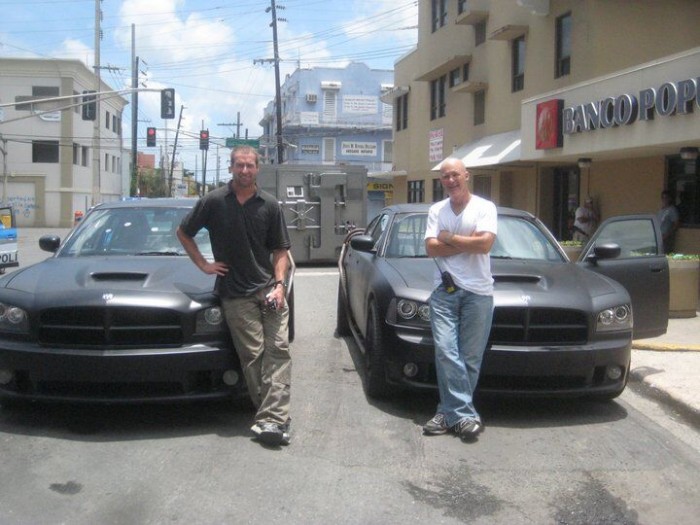 Part 5: PaulIn September 2013, principal photography on Furious 7 began in Atlanta, Georgia. Not long after, the 2nd unit started filming in Colorado. Jonathan: We were in Pike's Peak for a few weeks and then we were in Salida for some time after that. For someone like me, who's part of the ancillary cast—driving, say, Police Car #6 in a ten-car chase—I filled in wherever they need me to be. Sometimes that means driving a car, and other days it means raking snow off the side of the mountain. But the cool thing is that even when I'd be raking snow—not the most glamour thing, you know—guys like Jimmy Roberts and Lance Gilbert would be raking snow too. Jimmy Roberts does all of Tom Cruise's motorcycle work, and Lance Gilbert was Paul Walker's double in the car; so who am I to gripe for even two seconds, right? And not only are they doing it, but they're doing it with a smile on their face.A little over a month into production, Dwayne Johnson wrapped on Hercules (filming in Budapest) and he joined the rest of the team in Georgia. With the principal cast now all together, and the previous installment being deemed a bonafide blockbuster—Fast & Furious 6 had come out in May and, by October, earned over $700 million worldwide—things appeared to be going better than ever for the franchise. But in late November, tragedy struck the close-knit Fast family. Following an event for Paul Walker's charity Reach Out Worldwide, Walker and his financial manager Roger Rodas both died in a fatal car accident.
Part 5: PaulIn September 2013, principal photography on Furious 7 began in Atlanta, Georgia. Not long after, the 2nd unit started filming in Colorado. Jonathan: We were in Pike's Peak for a few weeks and then we were in Salida for some time after that. For someone like me, who's part of the ancillary cast—driving, say, Police Car #6 in a ten-car chase—I filled in wherever they need me to be. Sometimes that means driving a car, and other days it means raking snow off the side of the mountain. But the cool thing is that even when I'd be raking snow—not the most glamour thing, you know—guys like Jimmy Roberts and Lance Gilbert would be raking snow too. Jimmy Roberts does all of Tom Cruise's motorcycle work, and Lance Gilbert was Paul Walker's double in the car; so who am I to gripe for even two seconds, right? And not only are they doing it, but they're doing it with a smile on their face.A little over a month into production, Dwayne Johnson wrapped on Hercules (filming in Budapest) and he joined the rest of the team in Georgia. With the principal cast now all together, and the previous installment being deemed a bonafide blockbuster—Fast & Furious 6 had come out in May and, by October, earned over $700 million worldwide—things appeared to be going better than ever for the franchise. But in late November, tragedy struck the close-knit Fast family. Following an event for Paul Walker's charity Reach Out Worldwide, Walker and his financial manager Roger Rodas both died in a fatal car accident. 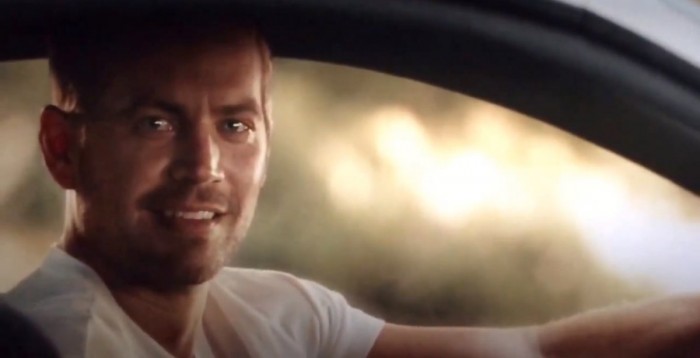 Jack: I got a call from a fellow stunt guy who had a friend that was at the site. It was about an hour after the accident had happened. And I asked: are you sure? Are you sure it was Paul? And he said, "Yeah. I don't know what to tell you, Jack, but it's him. We all saw him get in the car and it crashed into the tree. There's no way Paul got out. There's just no way." So we were in shock for several hours. Just waiting for that call saying, "Paul got out on the other side and everything's okay!"Heather: I had just lost my dad in February, and then Paul died 9 months later. It was devastating. I know I cried for sure. Not just for his loss, but since I'd just lost my dad, I cried for his daughter. At least I got my dad for 30 years.Andy: It was heartbreaking. He was a phenomenal guy. Just salt of the earth. No ego. Genuine. Loved cars, loved just being a guy. And really went out of his way to make you feel like he knew you and liked you. He wasn't a phony. Just a great, great guy.Heather: Paul was one of the good guys. We'd worked with him on 5, down in Puerto Rico. And I remember he'd just sit at the bar and chat with anyone. Just be a super kind human. Didn't have an ego. Did not care about the fame. The jerks and the jackasses—you can't get rid of them in Hollywood—but Paul, he was one of the good ones.Jack: A few months earlier, I was on the plane with Paul Walker when we flew down to Atlanta. And he was sitting next to an elderly lady—I was sitting across the aisle from him—who had heard us talking earlier. So at some point, she turned to Paul and said, "Did I hear that you're in the movie business?" And he said, "Yes, Ma'am, I am." And so they started talking and she asked what movies he had done. So he named off a bunch of movies and then she said, "Well I haven't really seen any of those movies." And he goes, "Ah, don't worry about it! It's not big deal." Then they went on to talk about how he had just bought this ranch—how much he loved that place—and they went on to talk for an hour. And after their conversation ended, Paul and I talked about how he was going to quit the business after this and he wanted to just, you know, try a hand at working on the farm for a while. And he said, "Maybe after three or four years, I'll come back into the business, but I just wanna...I just wanna be a farmhand for a while. I've got my daughter with me now and I've got a life that I want to try and live." And then for that tragedy to happen when it did, it was just catastrophic. Because he just wanted to get out of the business.On December 4, 2013, Universal put production on hold indefinitely. The hiatus lasted until April 1, when the cast and crew reunited to finish the movie. They were also aided, very critically, by Caleb and Cody Walker who honored their brother by filling in Jack: It was tough to go back, because everybody was thinking about Paul and, in every single shot, you're going: how are we going to do this without Paul? But, you know, we had a big get together and talked about it. And it what was Paul would have wanted: to try and finish it. I think Universal did a wonderful job...that was the way to do it.Andy: You get together as a group and you go on and do your best to make it worthwhile for him and his family.Jonathan: I don't think Paul would have wanted anybody to start pumping the brakes because of what happened. He was a big advocate for the stunts, and he was a big advocate for making it look great. He appreciated what we were doing. So I don't think Paul, for two seconds, would have wanted us re-evaluating what we were doing. And the beauty of what we do, and working with guys like Andy and Spiro, is that there's nobody in the group that's a cavalier cowboy. It's all a calculated risk, of course, but safety really does come first with those guys.
Jack: I got a call from a fellow stunt guy who had a friend that was at the site. It was about an hour after the accident had happened. And I asked: are you sure? Are you sure it was Paul? And he said, "Yeah. I don't know what to tell you, Jack, but it's him. We all saw him get in the car and it crashed into the tree. There's no way Paul got out. There's just no way." So we were in shock for several hours. Just waiting for that call saying, "Paul got out on the other side and everything's okay!"Heather: I had just lost my dad in February, and then Paul died 9 months later. It was devastating. I know I cried for sure. Not just for his loss, but since I'd just lost my dad, I cried for his daughter. At least I got my dad for 30 years.Andy: It was heartbreaking. He was a phenomenal guy. Just salt of the earth. No ego. Genuine. Loved cars, loved just being a guy. And really went out of his way to make you feel like he knew you and liked you. He wasn't a phony. Just a great, great guy.Heather: Paul was one of the good guys. We'd worked with him on 5, down in Puerto Rico. And I remember he'd just sit at the bar and chat with anyone. Just be a super kind human. Didn't have an ego. Did not care about the fame. The jerks and the jackasses—you can't get rid of them in Hollywood—but Paul, he was one of the good ones.Jack: A few months earlier, I was on the plane with Paul Walker when we flew down to Atlanta. And he was sitting next to an elderly lady—I was sitting across the aisle from him—who had heard us talking earlier. So at some point, she turned to Paul and said, "Did I hear that you're in the movie business?" And he said, "Yes, Ma'am, I am." And so they started talking and she asked what movies he had done. So he named off a bunch of movies and then she said, "Well I haven't really seen any of those movies." And he goes, "Ah, don't worry about it! It's not big deal." Then they went on to talk about how he had just bought this ranch—how much he loved that place—and they went on to talk for an hour. And after their conversation ended, Paul and I talked about how he was going to quit the business after this and he wanted to just, you know, try a hand at working on the farm for a while. And he said, "Maybe after three or four years, I'll come back into the business, but I just wanna...I just wanna be a farmhand for a while. I've got my daughter with me now and I've got a life that I want to try and live." And then for that tragedy to happen when it did, it was just catastrophic. Because he just wanted to get out of the business.On December 4, 2013, Universal put production on hold indefinitely. The hiatus lasted until April 1, when the cast and crew reunited to finish the movie. They were also aided, very critically, by Caleb and Cody Walker who honored their brother by filling in Jack: It was tough to go back, because everybody was thinking about Paul and, in every single shot, you're going: how are we going to do this without Paul? But, you know, we had a big get together and talked about it. And it what was Paul would have wanted: to try and finish it. I think Universal did a wonderful job...that was the way to do it.Andy: You get together as a group and you go on and do your best to make it worthwhile for him and his family.Jonathan: I don't think Paul would have wanted anybody to start pumping the brakes because of what happened. He was a big advocate for the stunts, and he was a big advocate for making it look great. He appreciated what we were doing. So I don't think Paul, for two seconds, would have wanted us re-evaluating what we were doing. And the beauty of what we do, and working with guys like Andy and Spiro, is that there's nobody in the group that's a cavalier cowboy. It's all a calculated risk, of course, but safety really does come first with those guys.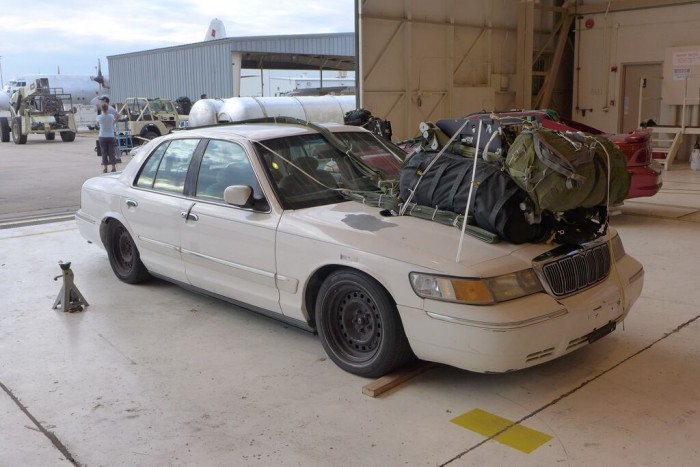 Part 6: The Anatomy of a Stunt (Plane Gag)The most memorable set piece in Furious 7 is a scene in which seven cars parachute out of a plane in order to land on a highly guarded mountaintop. Here's how it happened...Andy: We had just flown in from another movie—this was before we'd even signed on to do the film—and we have a meeting with James Wan, Neal Moritz and [producer] Michael Fottrell. I think there were a couple more bigwigs from Universal there too and then two guys from a company that had C130s [airplanes]. So we sit down to discuss the scene. Can we achieve this? Is it possible? And Spiro and I are kind of talking under our breathe. We think it's doable. They do it all the time in commercials—only with one car—but, still, we think it's doable. We'll figure out a way to do it for real. Well...Michael Fottrell, he didn't love the idea. It's costly! It's dangerous! Originally, he wanted us to do that entire mountain sequence on a flat runway in Atlanta. He said they'd CG in the background and the cliffs. And we fought it, of course. We said that doing it practical would save the studio money in the long run.Spiro: Not only was he against it, but if they were even going to move forward, he wanted to get someone else to do it. "How many air-to-airs have you done?" he said. "Let's get someone who knows how to do this." But I sat there and told him that I was going to do this. "I've never changed a tire before either," I said. "So does that mean you're not going to let me shoot car sequences any more?"Andy: And that's when all hell broke loose.Spiro: You don't say to Al Pacino: hey, you can't be in Scent of a Woman because you've never been blind before. If you trust in what he does, his craft, then you trust the person. And they needed to trust us to get those cars out of the plane.Andy: Michael looks at Spiro and says to him, "You will never a drop car out of the sky on this production." And Spiro goes to Neal, "See! See! We haven't even signed on to do the film and we're already getting pushed into doing the stunt with CG." So Neal walks with us outside, and then they bring Michael out, and Neal make both of them apologize to each other. And then, after that, Neal says to Michael, "Let Spiro do it the way he wants to do it."Jack: The next big thing to figure out was—even if we're able to parachute all those cars—how do we get them all to land in the right place? And we all kind of brainstormed it. That's how it always works with Fast and Furious. We sit around a table and you throw out ideas. And some of them are harebrained and some of them are brilliant. Nobody really takes credit on who thought it up. It's a team effort. Because it's become such a family. So we just go around and around, adding to each other's ideas.Andy: And then one of the C130 guys says that the military has GPS chutes that can put a tank within 10 meters of where you want.Jack: So it just kind of blossomed from there. Meanwhile, we still needed to figure out a location for the drop. Originally it was supposed to be the Black Forest in Germany, but after scouting it out we realized that it doesn't really give you any real vistas.
Part 6: The Anatomy of a Stunt (Plane Gag)The most memorable set piece in Furious 7 is a scene in which seven cars parachute out of a plane in order to land on a highly guarded mountaintop. Here's how it happened...Andy: We had just flown in from another movie—this was before we'd even signed on to do the film—and we have a meeting with James Wan, Neal Moritz and [producer] Michael Fottrell. I think there were a couple more bigwigs from Universal there too and then two guys from a company that had C130s [airplanes]. So we sit down to discuss the scene. Can we achieve this? Is it possible? And Spiro and I are kind of talking under our breathe. We think it's doable. They do it all the time in commercials—only with one car—but, still, we think it's doable. We'll figure out a way to do it for real. Well...Michael Fottrell, he didn't love the idea. It's costly! It's dangerous! Originally, he wanted us to do that entire mountain sequence on a flat runway in Atlanta. He said they'd CG in the background and the cliffs. And we fought it, of course. We said that doing it practical would save the studio money in the long run.Spiro: Not only was he against it, but if they were even going to move forward, he wanted to get someone else to do it. "How many air-to-airs have you done?" he said. "Let's get someone who knows how to do this." But I sat there and told him that I was going to do this. "I've never changed a tire before either," I said. "So does that mean you're not going to let me shoot car sequences any more?"Andy: And that's when all hell broke loose.Spiro: You don't say to Al Pacino: hey, you can't be in Scent of a Woman because you've never been blind before. If you trust in what he does, his craft, then you trust the person. And they needed to trust us to get those cars out of the plane.Andy: Michael looks at Spiro and says to him, "You will never a drop car out of the sky on this production." And Spiro goes to Neal, "See! See! We haven't even signed on to do the film and we're already getting pushed into doing the stunt with CG." So Neal walks with us outside, and then they bring Michael out, and Neal make both of them apologize to each other. And then, after that, Neal says to Michael, "Let Spiro do it the way he wants to do it."Jack: The next big thing to figure out was—even if we're able to parachute all those cars—how do we get them all to land in the right place? And we all kind of brainstormed it. That's how it always works with Fast and Furious. We sit around a table and you throw out ideas. And some of them are harebrained and some of them are brilliant. Nobody really takes credit on who thought it up. It's a team effort. Because it's become such a family. So we just go around and around, adding to each other's ideas.Andy: And then one of the C130 guys says that the military has GPS chutes that can put a tank within 10 meters of where you want.Jack: So it just kind of blossomed from there. Meanwhile, we still needed to figure out a location for the drop. Originally it was supposed to be the Black Forest in Germany, but after scouting it out we realized that it doesn't really give you any real vistas.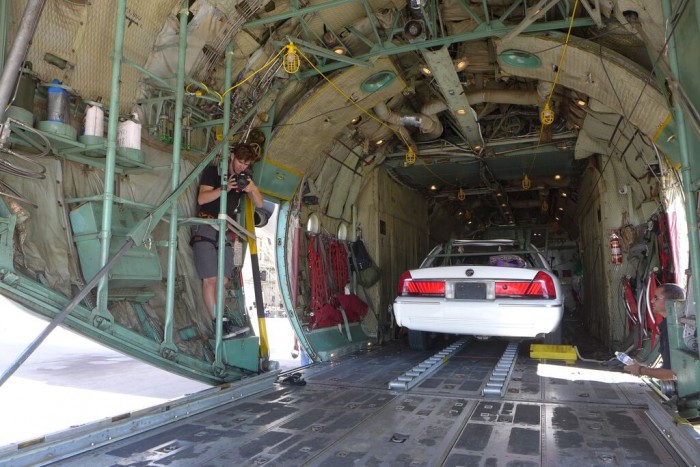 Andy: The location manager had pictures from Germany, Austria and all sorts of other places around the world, but then Pike's Peak was brought up—from Mike Ryan, I believe. He's holds the world record for a semi on Pike's Peak and he texted us a few pictures of possible locations. It looked like a good possibility, so Spiro and James went out there to do a big scout of it. They both loved it. Great! But there was resistance from Universal because Colorado wasn't a film kickback state. The studio wanted to film in a place where they had that [tax incentives]. And that was a big fight, but Spiro just kept saying nope-nope-nope to other places until finally he talked Universal into Colorado.Jonathan: Although we filmed most of the 2nd unit in Colorado, the cars were actually dumped out of the C130 in Arizona.Jack: We thought it would look better to shoot all the skydiving parts in Mesa, Arizona and then do the drop-ins from huge cranes in Pike's Peak.Andy: Cut to a month, two months later, and we get with Dan Sudick [the Special Effects Supervisor] to go out and run test drops on four cars. By this point, we had gotten chutes from the air force, but the problem was that these things were massive. You couldn't fit the chutes in the car, so you had to strap them onto the hood. And it didn't look sexy at all. But that was a problem for another day. In the meantime, we needed to get these cars out of the plane and land them safely. And Danny had built a rail system to do just that. It worked great.Jack: We started out with one—testing one car—then we went to two cars, and then up to three. But what we found by the time we reached three, is that the different weights of the cars made them fall at different rates and that made it a hard thing for us to film. So we had to put drogue chutes on the cars, so that our cameramen—who were actually jumping out with the cars—could actually stick with them and film them on the way down. So that became a little bit of an effort. Figuring out which drogue chute went with which car. And we also put sheeted steel on the bottoms of the cars—which kind of acted like a wing—so that they would fall flat and not tumble through the air so drastically. Because we wanted them to move a little bit, but not tumble like a normal car does.Andy: So we did the test and the next problem we found out was that in order to get the helicopter shots we wanted, we needed to film at around 8,000 feet. But our skydivers—who would be going with the cars—they wanted to go from 12,000 feet in order to get enough time in the sky. So that was a hiccup, and then another one came when the military said: "The chutes will work, but in order for them to hit their mark, they need to be dropped from 18,000 feet (and they'll open at 12,000)."Jack: So that was a process. It's always a process.Andy: We decided to come out at 8,000 feet for a couple of drops—so the helicopters could get their shots—and then we did it from 12,000 for the skydivers. Everyone loved the footage, but hated the chutes. We were less concerned about the GPS, because the sheeted steel allowed us to help predict the landing, but the look of those things was no good. So Dan contacted BRS [Ballistic Recovery Systems], the company that made the military parachutes, and they said they could customize something for us. So by the end of it, it all worked out. And we were able to get some absolutely beautiful shots.
Andy: The location manager had pictures from Germany, Austria and all sorts of other places around the world, but then Pike's Peak was brought up—from Mike Ryan, I believe. He's holds the world record for a semi on Pike's Peak and he texted us a few pictures of possible locations. It looked like a good possibility, so Spiro and James went out there to do a big scout of it. They both loved it. Great! But there was resistance from Universal because Colorado wasn't a film kickback state. The studio wanted to film in a place where they had that [tax incentives]. And that was a big fight, but Spiro just kept saying nope-nope-nope to other places until finally he talked Universal into Colorado.Jonathan: Although we filmed most of the 2nd unit in Colorado, the cars were actually dumped out of the C130 in Arizona.Jack: We thought it would look better to shoot all the skydiving parts in Mesa, Arizona and then do the drop-ins from huge cranes in Pike's Peak.Andy: Cut to a month, two months later, and we get with Dan Sudick [the Special Effects Supervisor] to go out and run test drops on four cars. By this point, we had gotten chutes from the air force, but the problem was that these things were massive. You couldn't fit the chutes in the car, so you had to strap them onto the hood. And it didn't look sexy at all. But that was a problem for another day. In the meantime, we needed to get these cars out of the plane and land them safely. And Danny had built a rail system to do just that. It worked great.Jack: We started out with one—testing one car—then we went to two cars, and then up to three. But what we found by the time we reached three, is that the different weights of the cars made them fall at different rates and that made it a hard thing for us to film. So we had to put drogue chutes on the cars, so that our cameramen—who were actually jumping out with the cars—could actually stick with them and film them on the way down. So that became a little bit of an effort. Figuring out which drogue chute went with which car. And we also put sheeted steel on the bottoms of the cars—which kind of acted like a wing—so that they would fall flat and not tumble through the air so drastically. Because we wanted them to move a little bit, but not tumble like a normal car does.Andy: So we did the test and the next problem we found out was that in order to get the helicopter shots we wanted, we needed to film at around 8,000 feet. But our skydivers—who would be going with the cars—they wanted to go from 12,000 feet in order to get enough time in the sky. So that was a hiccup, and then another one came when the military said: "The chutes will work, but in order for them to hit their mark, they need to be dropped from 18,000 feet (and they'll open at 12,000)."Jack: So that was a process. It's always a process.Andy: We decided to come out at 8,000 feet for a couple of drops—so the helicopters could get their shots—and then we did it from 12,000 for the skydivers. Everyone loved the footage, but hated the chutes. We were less concerned about the GPS, because the sheeted steel allowed us to help predict the landing, but the look of those things was no good. So Dan contacted BRS [Ballistic Recovery Systems], the company that made the military parachutes, and they said they could customize something for us. So by the end of it, it all worked out. And we were able to get some absolutely beautiful shots.
After they finished filming the drop in Arizona, the team moved on to Colorado to film the second part of the sequence: the landing. Jack: We thought we'd put our base camp at the top of the mountain [11,500 ft] and then work our way down. But when we put base camp at the top, people started getting altitude sickness. Headaches; hard to breathe. So we had to move our base camp down to 9,000 feet and only go back up to top when we really needed the shot. It was difficult. We really didn't think that was going to be a problem; but we had a lot of crewmembers that just couldn't survive up there because the oxygen depravation.Andy: Initially, for the landing part, I figured that we'd just drop the cars from cranes. The car hits the ground and then you walk away. But then Dan comes up to me and wants to show me something he was able to do with a helicopter. He had it on a big slide-for-life so that when he released it, the helicopter would slide down from an overhead line. He said, "Let's do this with the cars." And I go: yeah, that's bitchin.' So he built these two overhead lines—capable of rigging full-blown cars on these slide-for-life ropes. Then we towed the ropes and, as we did, the cars went up backwards into the air.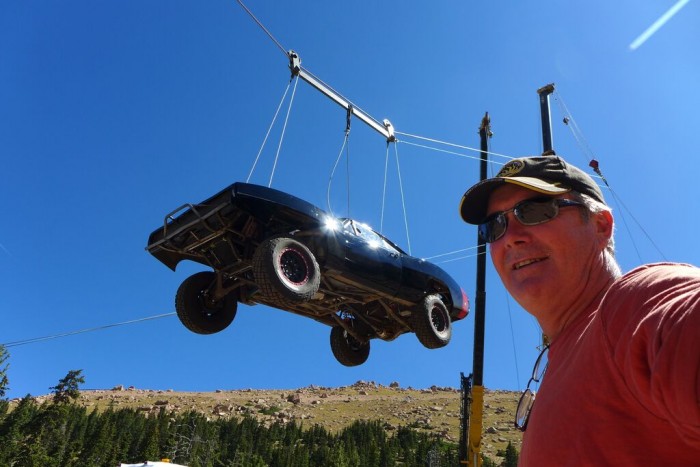 Jonathan: So you had cars dangling from a cable up in the sky. That was Day 1, getting those shots.Jack: We'd start a car up at 300 feet and then we let it come down at speed. And as it got close to the bottom—about 15 feet away from the ground–we jettisoned it loose with a parachute on it so that it's actually free falling as it drops to the ground. But since the parachute is only jettisoned at 15 feet—because it's really just there for looks—that doesn't help with sustaining the impact when it hits the ground. So we bent a lot of suspensions and we blew a lot of tires until we could figure it all out. But, just like we always do, eventually we did.Andy: And it was just so cool. Especially with the art department putting in these nice rocks and trees. The Effects firing right on cue. It looked so real...and, in a way, it was. It really was.
Jonathan: So you had cars dangling from a cable up in the sky. That was Day 1, getting those shots.Jack: We'd start a car up at 300 feet and then we let it come down at speed. And as it got close to the bottom—about 15 feet away from the ground–we jettisoned it loose with a parachute on it so that it's actually free falling as it drops to the ground. But since the parachute is only jettisoned at 15 feet—because it's really just there for looks—that doesn't help with sustaining the impact when it hits the ground. So we bent a lot of suspensions and we blew a lot of tires until we could figure it all out. But, just like we always do, eventually we did.Andy: And it was just so cool. Especially with the art department putting in these nice rocks and trees. The Effects firing right on cue. It looked so real...and, in a way, it was. It really was.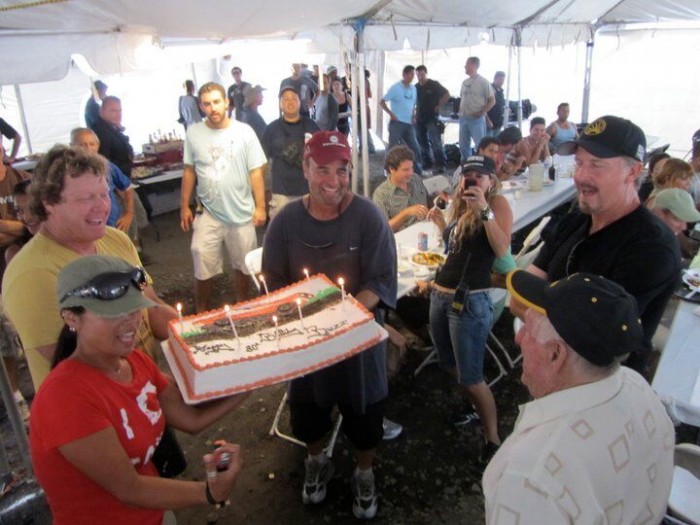 Part 7: "The Most Important Thing in Life Will Always Be the People in This Room"After speaking with everyone interviewed for this piece, I couldn't help but be struck by how much art imitated life. Just like Dom, Brian, Roman and the rest of the gang, these guys—Team Malaka—were a rag-tag, rough-and-tumble brotherhood. A fraternity. And although they may look like misfits, and may often find themselves in the midst of misadventures, they're really just a family of stuntmen) trying to pull off the ultimate heist: make the audience believe that they are along for the ride. Spiro: You're right. And the way we tease each other, make fun of each other...Andy: ...because we do have fun on set. It's a family. It's not a harsh work environment. It's not like a morgue. It's high intensity, but we all have a ball.Jack: A lot of other film crews rule by an iron fist. But that definitely doesn't work for us. That's not our style.Andy: When people are willing to work together—and listen to one another—it just opens the universe. It really does.Jonathan: Not to say that family won't get into squabbles everyone once in a while, but you won't hear any screaming or yelling. It's just not like that. At the end of the day, everyone loves and respects each other.
Part 7: "The Most Important Thing in Life Will Always Be the People in This Room"After speaking with everyone interviewed for this piece, I couldn't help but be struck by how much art imitated life. Just like Dom, Brian, Roman and the rest of the gang, these guys—Team Malaka—were a rag-tag, rough-and-tumble brotherhood. A fraternity. And although they may look like misfits, and may often find themselves in the midst of misadventures, they're really just a family of stuntmen) trying to pull off the ultimate heist: make the audience believe that they are along for the ride. Spiro: You're right. And the way we tease each other, make fun of each other...Andy: ...because we do have fun on set. It's a family. It's not a harsh work environment. It's not like a morgue. It's high intensity, but we all have a ball.Jack: A lot of other film crews rule by an iron fist. But that definitely doesn't work for us. That's not our style.Andy: When people are willing to work together—and listen to one another—it just opens the universe. It really does.Jonathan: Not to say that family won't get into squabbles everyone once in a while, but you won't hear any screaming or yelling. It's just not like that. At the end of the day, everyone loves and respects each other.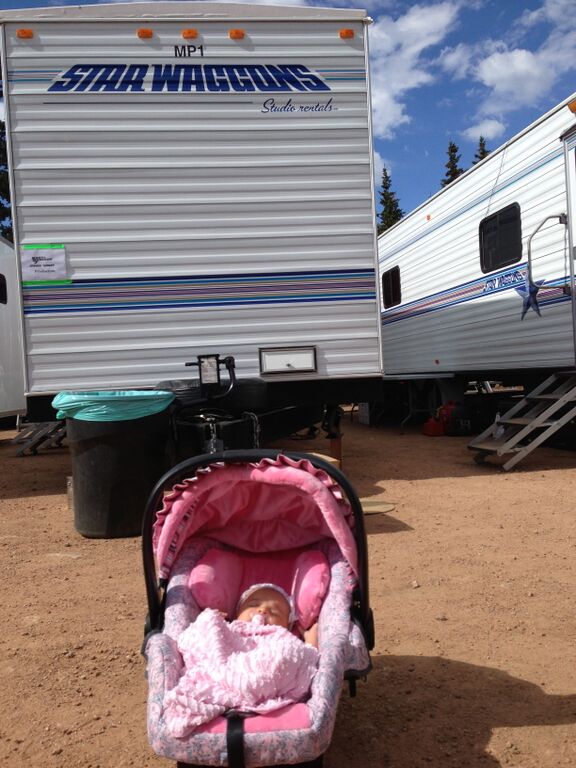 Heather: The personalities couldn't be more different. But you can tell that everyone is very close. Like a family. I'll give you an example: On 7, Andy and Spiro wanted me to come out, but I had just had my daughter Kate and she was only 5 weeks old. So I said, "I can't leave my baby for a long period of time." What about just a week? No, not even that. But Spiro really wanted me to work on this. So he says, "Why don't I give you my trailer. Bring your nanny and your kids and you can keep your kids on set and breastfeed your daughter between takes." I was like: are you kidding me? Nobody lets you do that. But that's how it is with these guys. Family comes first.Jack: And Spiro is the glue that keeps everyone together.Andy: The funny thing is that here's a guy who does the best action car movies in the world and if you put two cars in front of him—say, a Ferrari and a VW—he couldn't tell you the difference. Which one is the more expensive car? He's got no idea.Spiro: I don't know how to change a tire or check the oil or anything. I go to these meetings for Fast and Furious and they're talking about this and this and this and I have no clue. I don't know even know what an engine does.Andy: Cars don't interest him that way.Spiro: But I know how to get an interesting shot that helps tell the story. I think that's been my secret—to get great shots that also enhance the story. Cool angles are a dime a dozen. But if there's a shot that the audience doesn't see every day; that, to me, is what I look for. And if I'm given the breathing room, creativilly, I can make something special.Andy: And that's where us all knowing each so well comes into play. Our guys, they know how Spiro likes the angles placed, how to find that tiny opening to see the camera—whipping in and out—they just know things.
Heather: The personalities couldn't be more different. But you can tell that everyone is very close. Like a family. I'll give you an example: On 7, Andy and Spiro wanted me to come out, but I had just had my daughter Kate and she was only 5 weeks old. So I said, "I can't leave my baby for a long period of time." What about just a week? No, not even that. But Spiro really wanted me to work on this. So he says, "Why don't I give you my trailer. Bring your nanny and your kids and you can keep your kids on set and breastfeed your daughter between takes." I was like: are you kidding me? Nobody lets you do that. But that's how it is with these guys. Family comes first.Jack: And Spiro is the glue that keeps everyone together.Andy: The funny thing is that here's a guy who does the best action car movies in the world and if you put two cars in front of him—say, a Ferrari and a VW—he couldn't tell you the difference. Which one is the more expensive car? He's got no idea.Spiro: I don't know how to change a tire or check the oil or anything. I go to these meetings for Fast and Furious and they're talking about this and this and this and I have no clue. I don't know even know what an engine does.Andy: Cars don't interest him that way.Spiro: But I know how to get an interesting shot that helps tell the story. I think that's been my secret—to get great shots that also enhance the story. Cool angles are a dime a dozen. But if there's a shot that the audience doesn't see every day; that, to me, is what I look for. And if I'm given the breathing room, creativilly, I can make something special.Andy: And that's where us all knowing each so well comes into play. Our guys, they know how Spiro likes the angles placed, how to find that tiny opening to see the camera—whipping in and out—they just know things.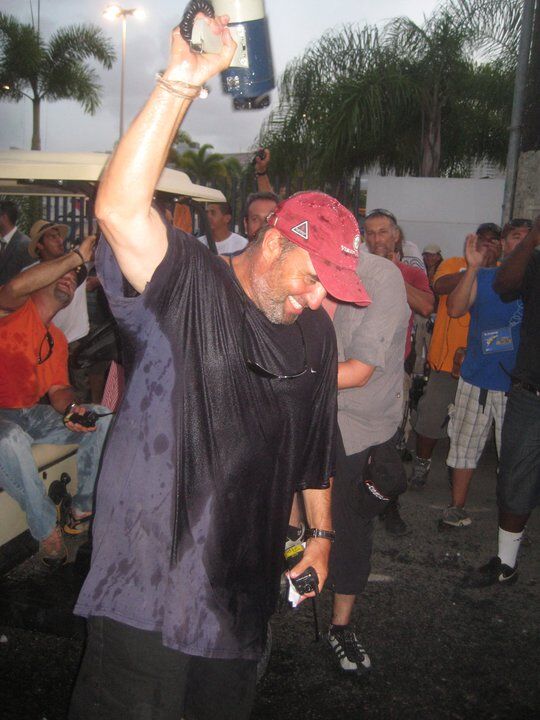 Spiro: Team Malaka.Andy: It is a family, and it's hard to explain to producers, but it's true.Spiro: Team Malaka!Andy: Do you really want to know where that word comes from?Jack: And if you parallel it to a Columbo, nobody on that series understood Columbo but his close friends.Andy: Are you sure you want to know?Jack: And in the end—with the help of those friends—Columbo got the problem solved. And in the end, Spiro will get the problem solved.Andy: Well Spiro, as you probably know, Spiro is Greek. And in Greek, malaka means "jerkoff." And that's his view of us; we're all a bunch of jerkoffs just having fun. It's not these highbrow, straight-laced guys reporting for duty sir. It's just this mismatched bunch of jerkoffs putting it together and having fun.
Spiro: Team Malaka.Andy: It is a family, and it's hard to explain to producers, but it's true.Spiro: Team Malaka!Andy: Do you really want to know where that word comes from?Jack: And if you parallel it to a Columbo, nobody on that series understood Columbo but his close friends.Andy: Are you sure you want to know?Jack: And in the end—with the help of those friends—Columbo got the problem solved. And in the end, Spiro will get the problem solved.Andy: Well Spiro, as you probably know, Spiro is Greek. And in Greek, malaka means "jerkoff." And that's his view of us; we're all a bunch of jerkoffs just having fun. It's not these highbrow, straight-laced guys reporting for duty sir. It's just this mismatched bunch of jerkoffs putting it together and having fun.